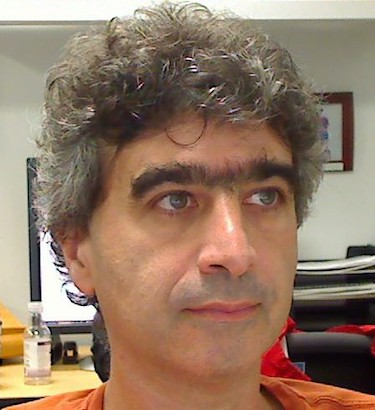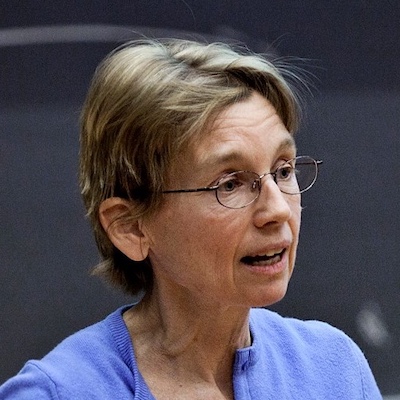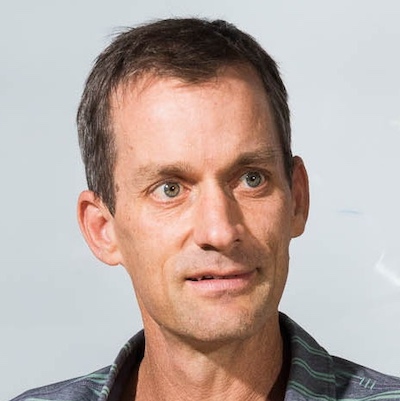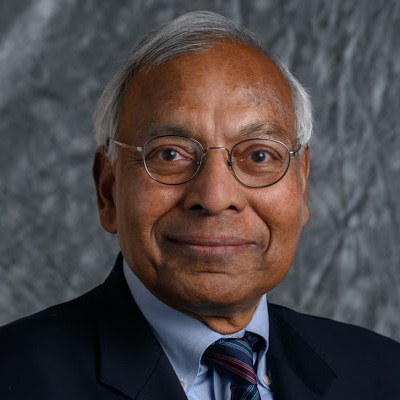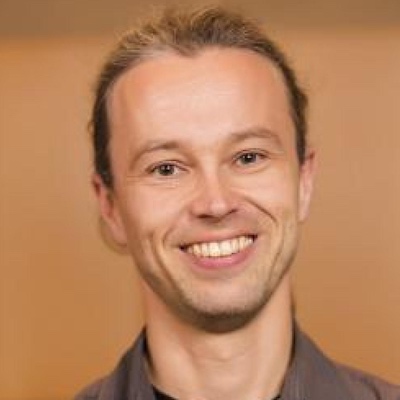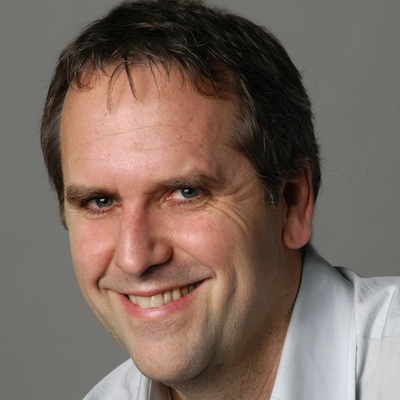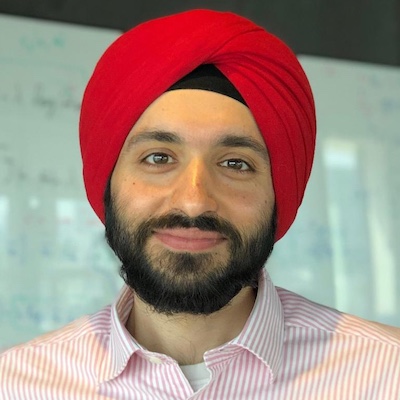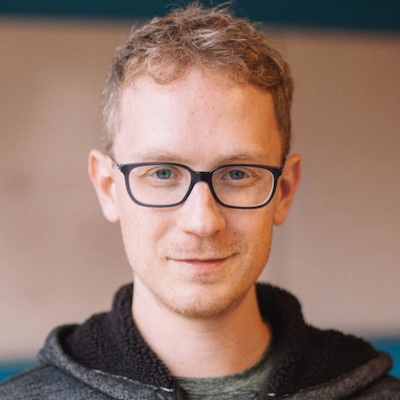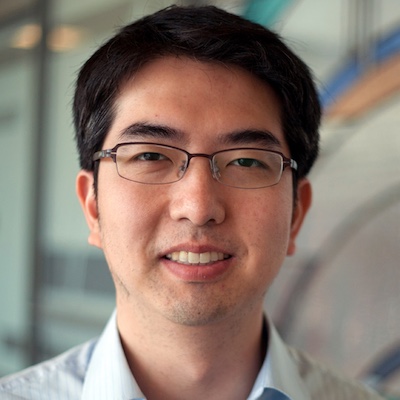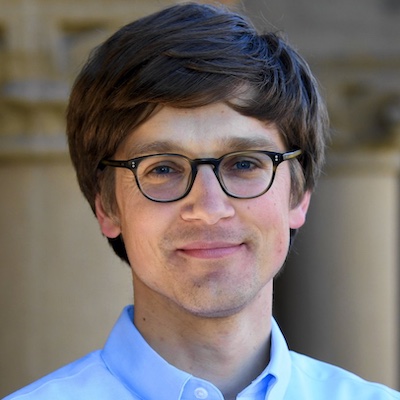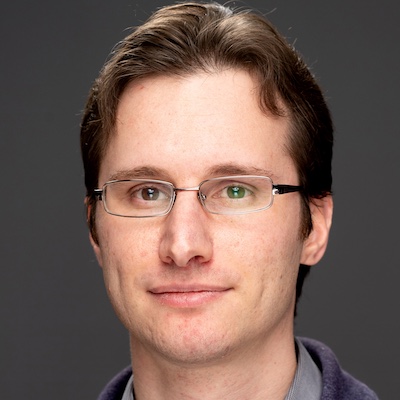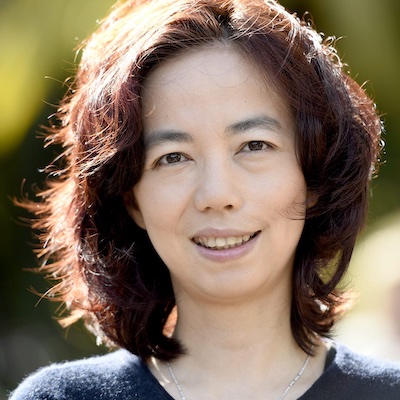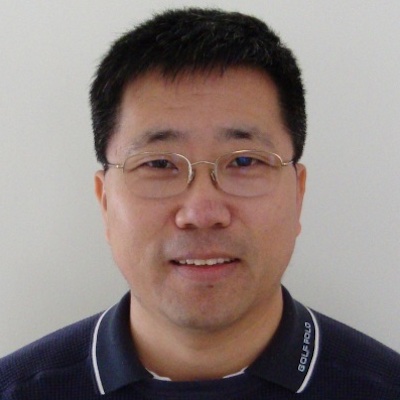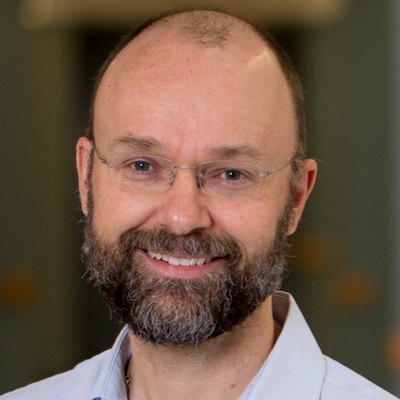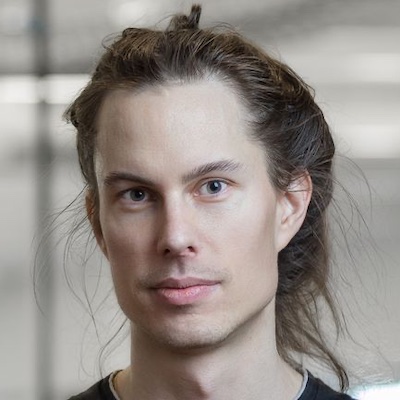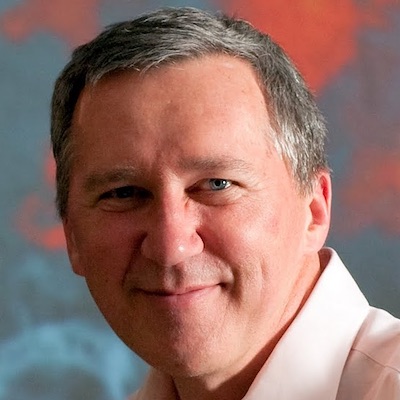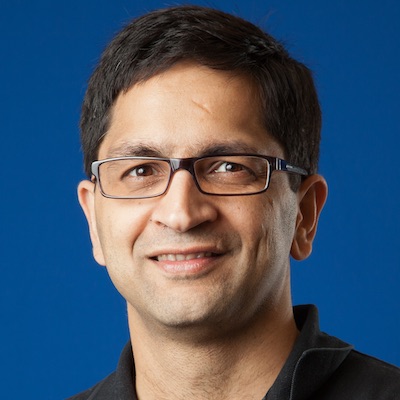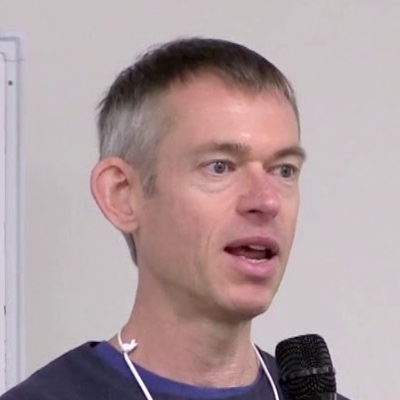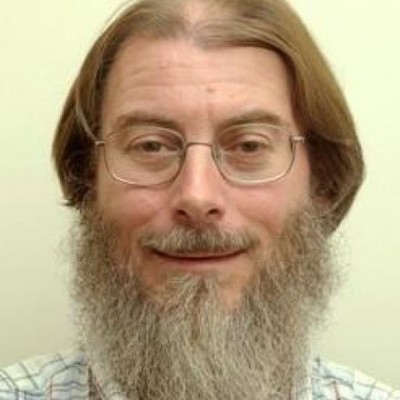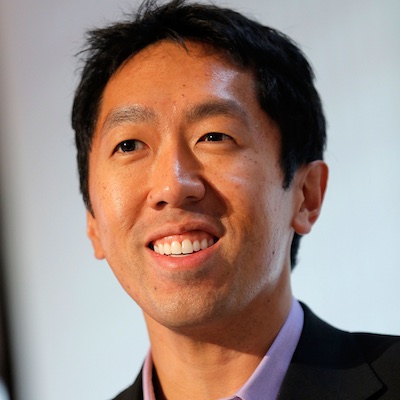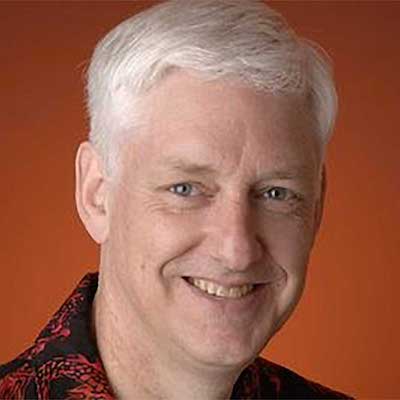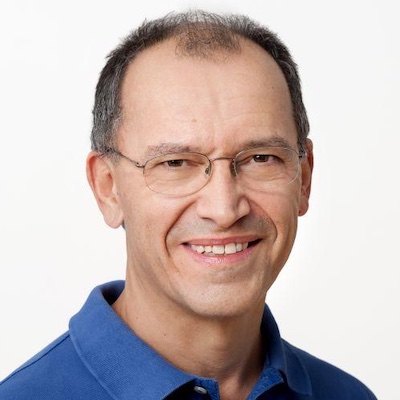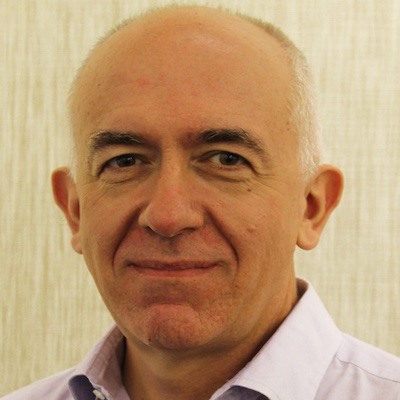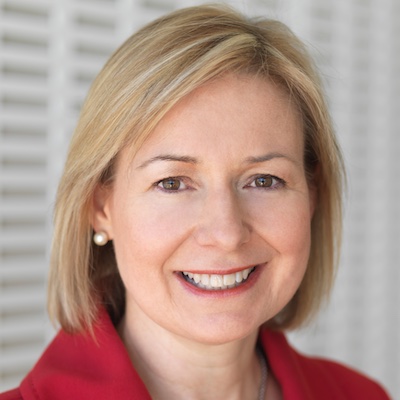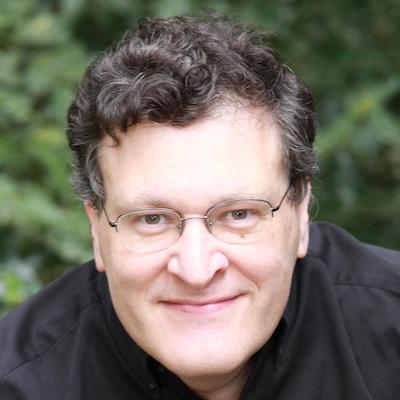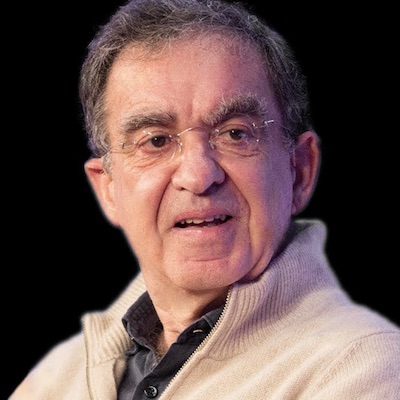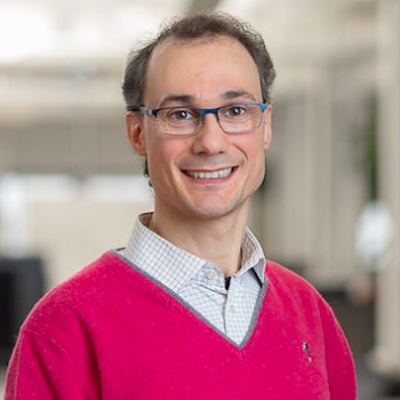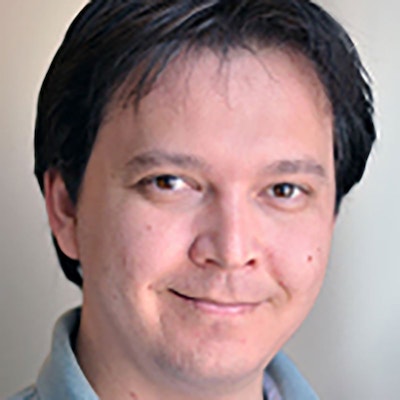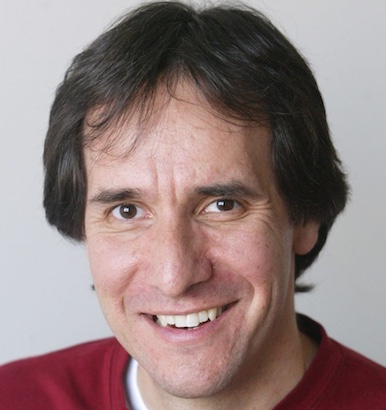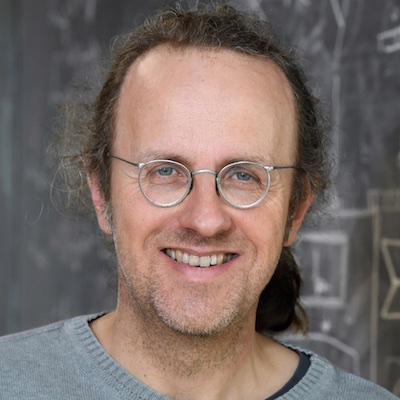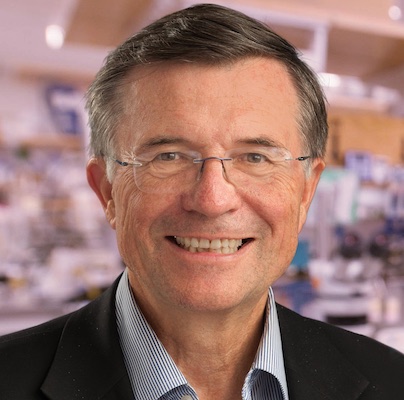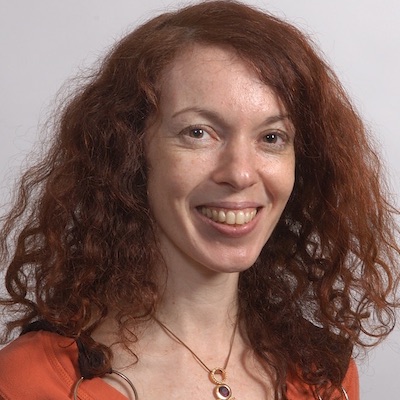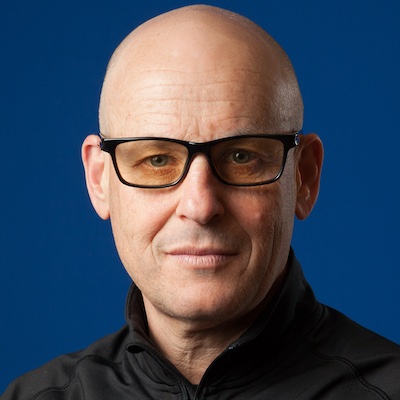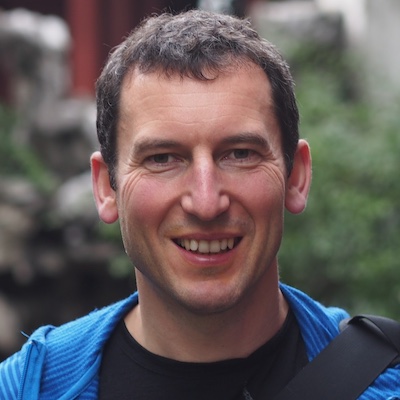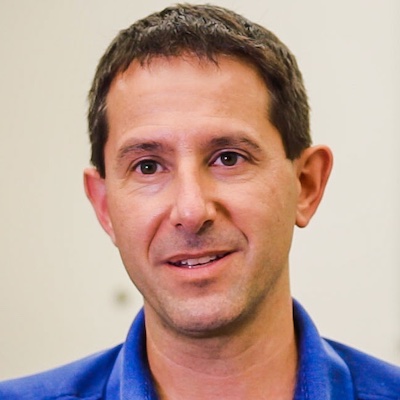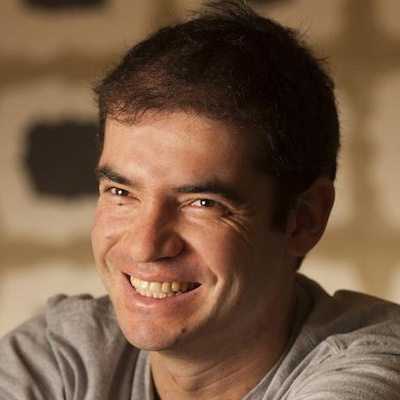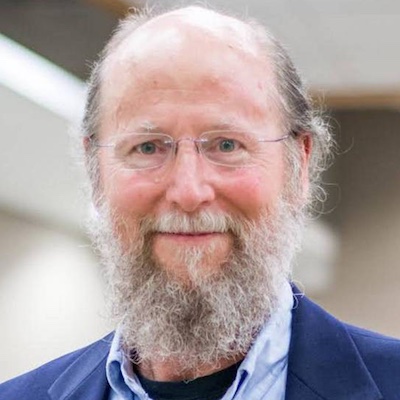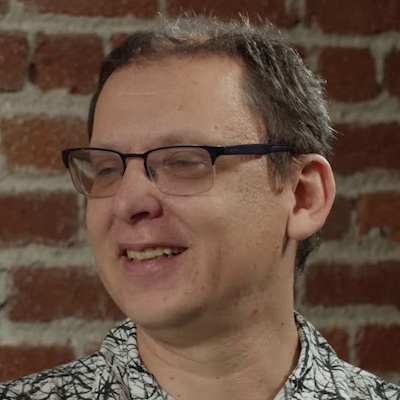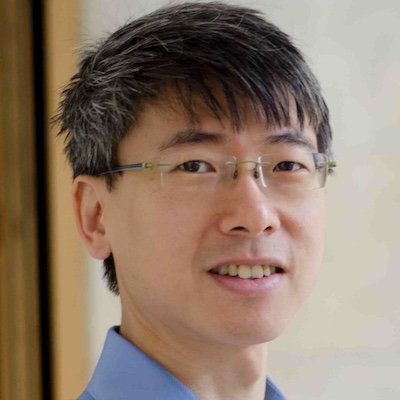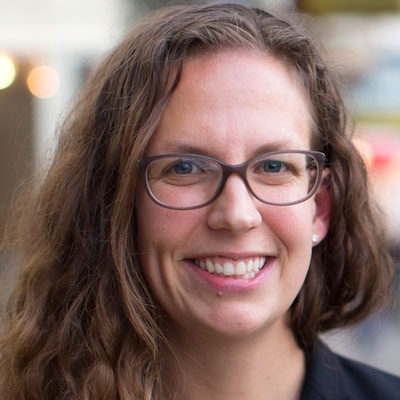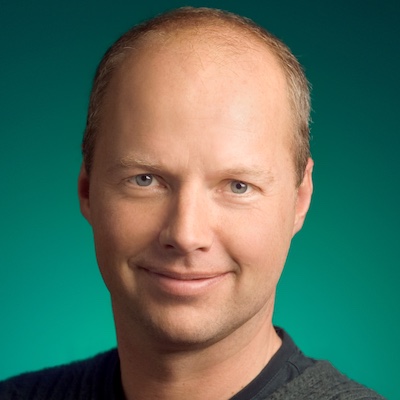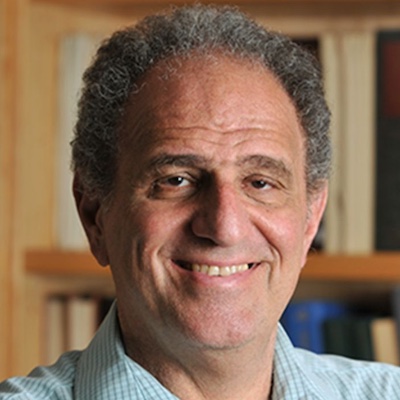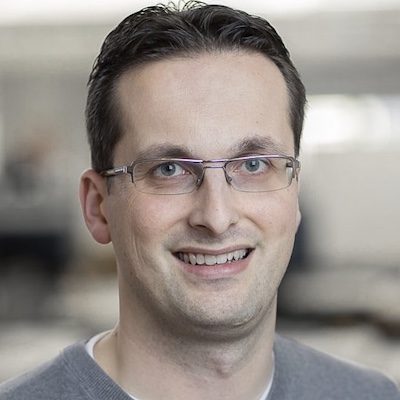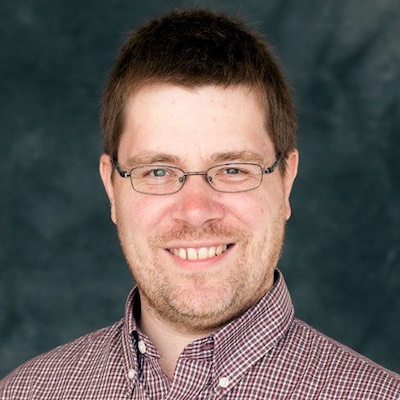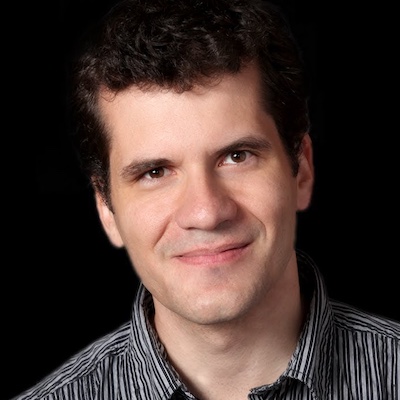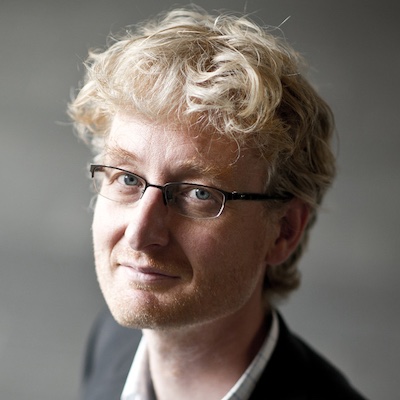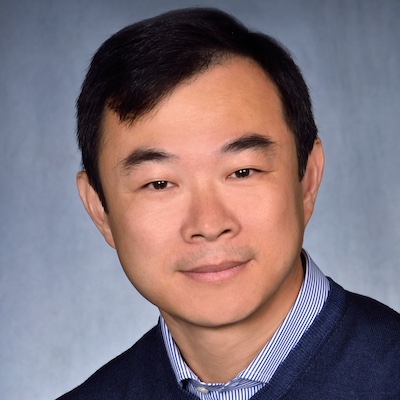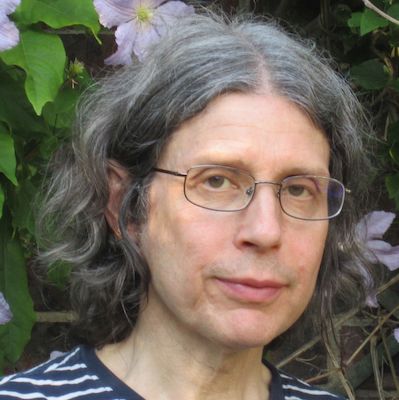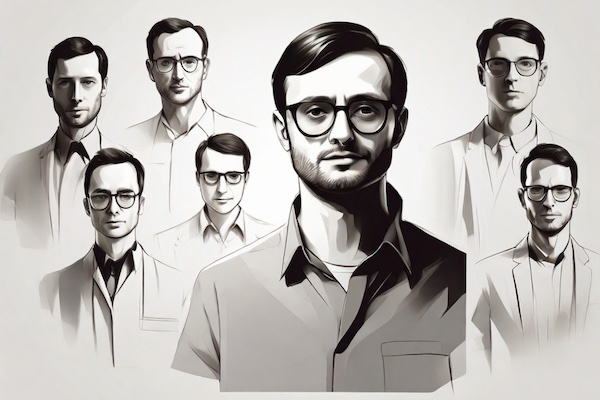
Introduction
As the field of artificial intelligence (AI) and Machine Learning (ML) grows fast, it is interesting and useful to know who are some of the top experts in the field. This is useful to follow them on social media and know what they are up to, or for graduate students to pick one of them to study as their graduate students, or for industry and companies to get in touch with some of them to get some consultation regarding ideas they have. In order to come up with the list, we have done a lot of web searches and looked at metrics such as the number of citations on Google Scholar or the list of award winners on IEEE. In this post you will see a list of 103 world class experts in the area of machine learning and AI. For each expert we have added a small biography, the place that they currently work as well as the school that they have graduated from. Then based on our findings we looked to see where the most of these experts work and live, and what schools have generated most experts.
List of experts
In this section we show you list of top experts in machine learning and AI. The list is alphabetically ordered.1. Pieter Abbeel: Ph.D. Stanford, h-index: 101, #citations: 45,732
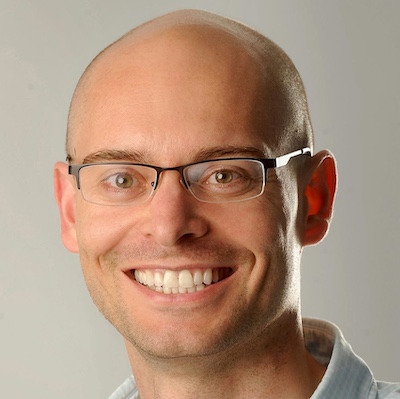
Pieter Abbeel: Professor of Electrical Engineering and Computer Science at UC Berkeley
Pieter Abbeel is a professor of electrical engineering and computer science, Director of the Berkeley Robot Learning Lab, and co-director of the Berkeley AI Research (BAIR) Lab at the University of California, Berkeley. He is also the co-founder of covariant.ai, a venture-funded start-up that aims to teach robots new, complex skills, and co-founder of Gradescope, an online grading system that has been implemented in over 500 universities nationwide. He is best known for his cutting-edge research in robotics and machine learning, particularly in deep reinforcement learning.
2. Yaser Abu-Mostafa: Ph.D. Caltech

Yaser Abu-Mostafa: Professor of Electrical Engineering and Computer Science at the California Institute of Technology
Yaser S. Abu-Mostafa is a Professor of Electrical Engineering and Computer Science at the California Institute of Technology, Chairman of Paraconic Technologies Ltd, and Chairman of Machine Learning Consultants LLC. His main fields of expertise are Machine Learning, Artificial Intelligence, and Computational Finance. He is the author of Amazon’s machine learning bestseller Learning from Data. His MOOC on machine learning has attracted more than seven million views.
3. Jimmy Ba: Ph.D. University of Toronto, , h-index: 26, #citations: 66,184

Jimmy Ba: Assistant Professor in the Department of Computer Science at the University of Toronto
Jimmy Ba is an Assistant Professor in the Department of Computer Science at the University of Toronto. His research focuses on developing novel learning algorithms for neural networks. He is broadly interested in questions related to reinforcement learning, computational cognitive science, artificial intelligence, computational biology, and statistical learning theory. Professor Ba completed his Ph.D. under the supervision of Geoffrey Hinton. He is a Canada CIFAR AI chair.
4 .Peter Bartlett: Ph.D. University of Queensland, Australia, h-index: 69, #citations: 35,140
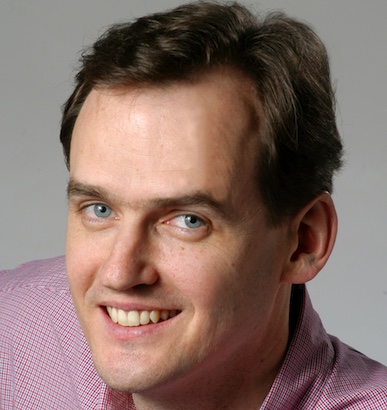
Peter Bartlett: Professor in the Computer Science Division and Department of Statistics and Associate Director of the Simons Institute for the Theory of Computing at the University of California at Berkeley
Peter Bartlett is a professor in the Computer Science Division and Department of Statistics and Associate Director of the Simons Institute for the Theory of Computing at the University of California at Berkeley. He is the co-author, with Martin Anthony, of the book Neural Network Learning, has edited four other books and has co-authored many papers in the areas of machine learning and statistical learning theory. He has consulted to a number of organizations, including General Electric, Telstra, and SAC Capital Advisors. He was awarded the Malcolm McIntosh Prize for Physical Scientist of the Year in Australia in 2001, and was chosen as an Institute of Mathematical Statistics Medallion Lecturer in 2008 and an IMS Fellow and Australian Laureate Fellow in 2011. He was elected to the Australian Academy of Science in 2015. his publications have been cited 35,062 times.
5. Samy Bengio: Ph.D. University of Montreal, h-index: 79, #citations: 38,734
Samy Bengio has been a research scientist at Google since 2007. He currently leads a group of research scientists in the Google Brain team, conducting research in many areas of machine learning such as deep architectures, representation learning, sequence processing, speech recognition, image understanding, large-scale problems, adversarial settings, etc. He was the general chair for Neural Information Processing Systems (NeurIPS) 2018, was the program chair for NeurIPS in 2017, is an action editor of the Journal of Machine Learning Research and on the editorial board of the Machine Learning Journal, was program chair of the International Conference on Learning Representations (ICLR 2015, 2016), general chair of BayLearn (2012-2015) and the Workshops on Machine Learning for Multimodal Interactions (MLMI'2004-2006), as well as the IEEE Workshop on Neural Networks for Signal Processing (NNSP'2002).
6. Yoshua Bengio: Ph.D. McGill University, h-index: 168, #citations: 319,682
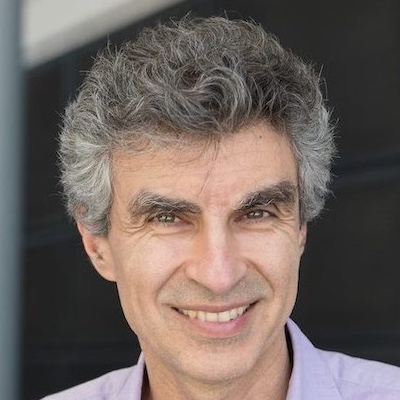
Yoshua Bengio: Professor at the Department of Computer Science and Operations Research at the Université de Montréal and scientific director of the Montreal Institute for Learning Algorithms (MILA)
Yoshua Bengio is a Canadian computer scientist, most noted for his work on artificial neural networks and deep learning. He was a co-recipient of the 2018 ACM A.M. Turing Award for his work in deep learning. He is a professor at the Department of Computer Science and Operations Research at the Université de Montréal and scientific director of the Montreal Institute for Learning Algorithms (MILA). Bengio, together with Geoffrey Hinton and Yann LeCun, are referred to by some as the “Godfathers of AI” and “Godfathers of Deep Learning”.
7. Christopher M. Bishop: Ph.D. University of Edinburgh, h-index: 66, #citations: 114,949

Christopher M. Bishop: is the Laboratory Director at Microsoft Research Cambridge, Professor of Computer Science at the University of Edinburgh, and a Fellow of Darwin College, Cambridge
Christopher Michael Bishop is the Laboratory Director at Microsoft Research Cambridge, Professor of Computer Science at the University of Edinburgh, and a Fellow of Darwin College, Cambridge. Bishop’s research investigates machine learning by allowing computers to learn from data and experience. He was awarded the Tam Dalyell Prize in 2009 and the Rooke Medal from the Royal Academy of Engineering in 2011. He gave the Royal Institution Christmas Lectures in 2008 and the Turing Lecture in 2010. Bishop was elected a Fellow of the Royal Academy of Engineering (FREng) in 2004, a Fellow of the Royal Society of Edinburgh (FRSE) in 2007, and Fellow of the Royal Society (FRS) in 2017. He is well known for his “Pattern Recognition and Machine Learning” book.
8. David Blei: Ph.D. UC Berkeley, h-index: 88, #citations: 87,959
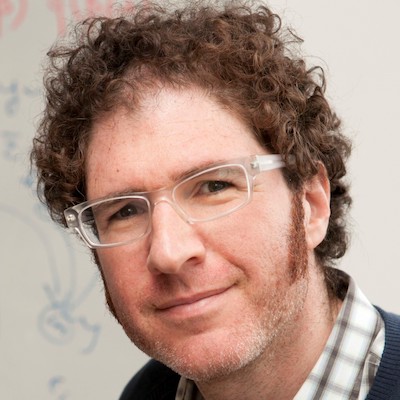
David Blei: is a Professor in the Statistics and Computer Science departments at Columbia University
David M. Blei is a professor in the Statistics and Computer Science departments at Columbia University. Prior to fall 2014, he was an associate professor in the Department of Computer Science at Princeton University. His work is primarily in machine learning. His research interests include topic models and he was one of the original developers of latent Dirichlet allocation, along with Andrew Ng and Michael I. Jordan. As of June 18, 2020, his publications have been cited 83,214 times. Blei received the ACM Infosys Foundation Award in 2013. (This award is given to a computer scientist under the age of 45. It has since been renamed the ACM Prize in Computing.) He was named Fellow of ACM “For contributions to the theory and practice of probabilistic topic modeling and Bayesian machine learning” in 2015.
9. Avrim Blum: Ph.D. MIT, h-index: 73, #citations: 32,712

Avrim Blum: is Professor and Chief Academic Officer at Toyota Technological Institute at Chicago (TTIC)
Avrim Blum is Professor and Chief Academic Officer at Toyota Technological Institute at Chicago (TTIC). The Toyota Technological Institute at Chicago (TTIC or TTI-Chicago) is a PhD-granting computer science institute focusing in the areas of machine learning, algorithms, AI (robotics, natural language, speech, and vision), and computational biology, located on the University of Chicago campus. His main research interests are in machine learning theory, approximation algorithms, on-line algorithms, algorithmic game theory/mechanism design, the theory of database privacy, algorithmic fairness, and non-worst-case analysis of algorithms. Before joining TTIC, he spent 25 years on the CS faculty at Carnegie Mellon University.
10. Leon Bottou: Ph.D. Université Paris-Sud, h-index: 73, #citations: 83,967
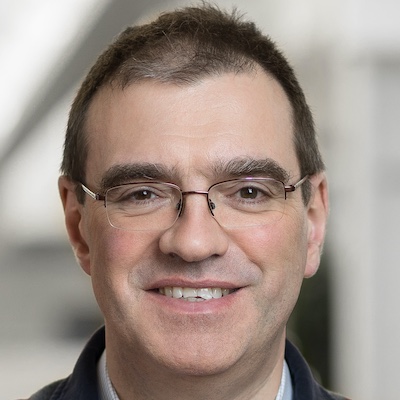
Leon Bottou: Researched Lead at Facebook Artificial Intelligence Research
Léon Bottou is a researcher best known for his work in machine learning and data compression. His work presents stochastic gradient descent as a fundamental learning algorithm. He is also one of the main creators of the DjVu image compression technology (together with Yann LeCun and Patrick Haffner), and the maintainer of DjVuLibre, the open-source implementation of DjVu. He is the original developer of the Lush programming language. In 1996, he joined AT&T Labs and worked primarily on the DjVu image compression technology. Between 2002 and 2010, he was a research scientist at NEC Laboratories in Princeton, New Jersey, where he focused on the theory and practice of machine learning with large-scale datasets, on-line learning, and stochastic optimization methods. He developed the open-source software LaSVM for fast large-scale support vector machine and stochastic gradient descent software for training linear SVM and Conditional Random Fields. In 2010 he joined the Microsoft adCenter in Redmond, Washington, and in 2012 became a Principal Researcher at Microsoft Research in New York City. In March 2015 he joined Facebook Artificial Intelligence Research, also in New York City, as a research lead.
11. Matt Botvinick: Ph.D. Carnegie Mellon University, h-index: 78, #citations: 47,968
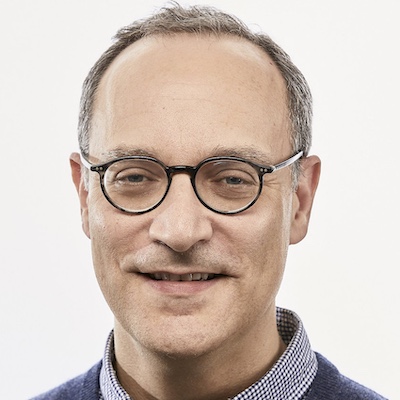
Matt Botvinick: is Director of Neuroscience Research at DeepMind and Honorary Professor at the Gatsby Computational Neuroscience Unit at University College London
Matthew Botvinick is Director of Neuroscience Research at DeepMind and Honorary Professor at the Gatsby Computational Neuroscience Unit at University College London. Dr. Botvinick completed his undergraduate studies at Stanford University in 1989 and medical studies at Cornell University in 1994, before completing a Ph.D. in psychology and cognitive neuroscience at Carnegie Mellon University in 2001. He served as Assistant Professor of Psychiatry and Psychology at the University of Pennsylvania until 2007 and Professor of Psychology and Neuroscience at Princeton University until joining DeepMind in 2016. Dr. Botvinick’s work at DeepMind straddles the boundaries between cognitive psychology, computational and experimental neuroscience, and artificial intelligence.
12. Jaime Carbonell: Ph.D. Yale, h-index: 75, #citations: 31,260
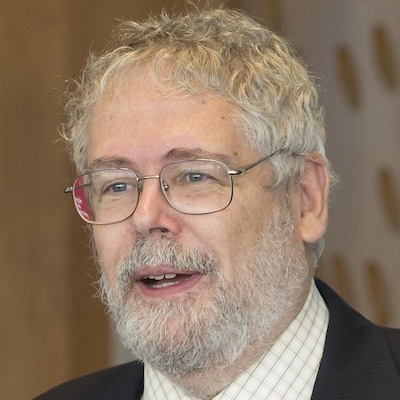
Jaime Carbonell: was University Professor, Allen Newell Professor, School of Computer Science at Carnegie Mellon University
Jaime Guillermo Carbonell was a computer scientist who made seminal contributions to the development of natural language processing tools and technologies. His extensive research in machine translation resulted in the development of several state-of-the-art language translation and artificial intelligence systems. He did his Ph.D. under Dr. Roger Schank at Yale University. He joined Carnegie Mellon University as an assistant professor of computer science in 1979. His interests spanned several areas of artificial intelligence, language technologies, and machine learning. In particular, his research focused on areas such as text mining (extraction, categorization, novelty detection) and in new theoretical frameworks such as a unified utility-based theory bridging information retrieval, summarization, free-text question-answering, and related tasks. He also worked on machine translation, both high-accuracy knowledge-based MT and machine learning for corpus-based MT (such as generalized example-based MT).
13. François Chollet: graduated from MINES ParisTech, h-index: 13, #citations: 13,872
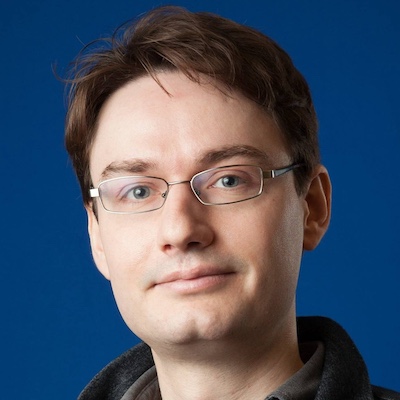
François Chollet: Artificial Intelligence Researcher at Google
Francois Chollet is the creator of Keras (keras.io), a leading deep learning API, and author of the popular textbook “Deep Learning with Python”. He is also a machine learning researcher at Google Brain and a contributor to the TensorFlow machine learning platform. His primary interests are: - Understanding the nature of abstraction and developing algorithms capable of autonomous abstraction (i.e. general intelligence), - Democratizing the development and deployment of AI technology, by making it easier to use and explaining it clearly leveraging technology, in particular AI, to help people gain greater agency over their circumstances and reach their full potential (e.g. EdTech, steerable recommendation engines, personal productivity tech, etc.), - Understanding and simulating the early stages of human cognitive development (e.g. developmental psychology, cognitive-developmental robotics).
14. William W. Cohen: Ph.D. Rutgers University, h-index: 81, #citations: 35,257
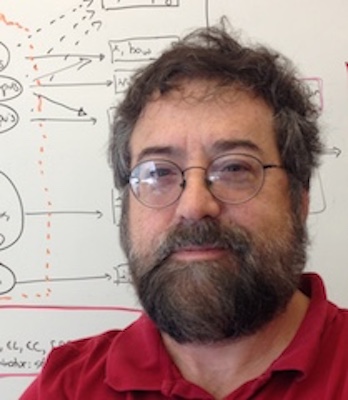
William W. Cohen: is a Director of Research Engineering at Google
William Cohen is a Principal Scientist at Google. He received a Ph.D. in Computer Science from Rutgers University in 1990. From 1990 to 2000 he worked at AT&T Bell Labs, and from April 2000 to May 2002 he worked at Whizbang Labs, a company specialising in extracting information from the web. From 2002 to 2018, Dr. Cohen worked at Carnegie Mellon University in the Machine Learning Department, with a joint appointment in the Language Technology Institute, as an Associate Research Professor, a Research Professor, and a Professor. Dr. Cohen also was the Director of the Undergraduate Minor in Machine Learning at CMU and co-Director of the Master of Science in ML Program. He is a past president of the International Machine Learning Society. He is an AAAI Fellow and was a winner of 2008 the SIGMOD “Test of Time” Award for the most influential SIGMOD paper of 1998, and the 2014 SIGIR “Test of Time” Award for the most influential SIGIR paper of 2002-2004. Dr. Cohen’s research interests include information integration and machine learning, particularly information extraction, text categorization, and learning from large datasets. He has a long-standing interest in statistical relational learning and learning models or learning from data, that display non-trivial structure. He holds seven patents related to learning, discovery, information retrieval, and data integration, and is the author of more than 200 publications.
15. Greg Corrado: Ph.D. Stanford, h-index: 45, #citations: 83,279

Greg Corrado: is a Distinguished Scientist and a Senior Research Director at Google AI
Greg Corrado is a Distinguished Scientist and a Senior Research Director at Google AI, interested in biological neuroscience, artificial intelligence, and scalable machine learning. He has published in fields ranging across behavioral economics, neuromorphic device physics, systems neuroscience, and deep learning. At Google, he has worked for some time on brain-inspired computing and most recently has served as one of the founding members and the co-technical lead of Google’s large scale deep neural networks project.
16. Corinna Cortes: Ph.D. University of Rochester, h-index: 55, #citations: 60,210
Corinna Cortes is a Danish computer scientist known for her contributions to machine learning. She is currently the Head of Google Research, New York. Cortes is a recipient of the Paris Kanellakis Theory and Practice Award for her work on theoretical foundations of support vector machines. Cortes received her M.S. degree in physics from Copenhagen University in 1989. In the same year, she joined AT&T Bell Labs as a researcher and remained there for about ten years. She received her Ph.D. in computer science from the University of Rochester in 1993. She currently serves as the Head of Google Research, New York. She is also an Editorial Board member of the journal Machine Learning. Her research covers a wide range of topics in machine learning, including support vector machines and data mining. In 2008, she jointly with Vladimir Vapnik received the Paris Kanellakis Theory and Practice Award for the development of a highly effective algorithm for supervised learning known as support vector machines (SVM). Today, SVM is one of the most frequently used algorithms in machine learning, which is used in many practical applications, including medical diagnosis and weather forecasting.
17. Aaron Courville: Ph.D. University of Rochester, h-index: 72, #citations: 84,951
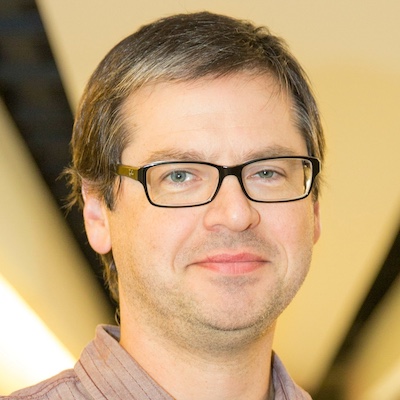
Aaron Courville: is an Assistant Professor in the Department of Computer Science and Operations Research (DIRO) at the University of Montreal
Aaron Courville is an Assistant Professor in the Department of Computer Science and Operations Research (DIRO) at the University of Montreal, and a member of Mila – Quebec Artificial Intelligence Institute. His current research interests focus on the development of deep learning models and methods. He is particularly interested in developing probabilistic models and novel inference methods. He has mainly focused on applications to computer vision but is also interested in other domains such as natural language processing, audio signal processing, speech understanding, and just about any other artificial-intelligence-related task.
18. Nello Cristianini: Ph.D. University of Bristol, h-index: 59, #citations: 58,357
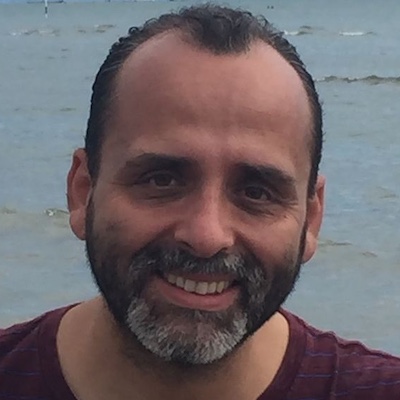
Nello Cristianini: is a Professor of Artificial Intelligence in the Department of Computer Science at the University of Bristol
Nello Cristianini is a Professor of Artificial Intelligence in the Department of Computer Science at the University of Bristol, previously he has been an Associate Professor at the University of California, Davis. His research contributions encompass the fields of machine learning, artificial intelligence, and bioinformatics. Particularly, his work has focused on the statistical analysis of learning algorithms, to its application to support vector machines, kernel methods, and other algorithms. Cristianini is the co-author of two widely known books in machine learning, An Introduction to Support Vector Machines and Kernel Methods for Pattern Analysis, and a book in bioinformatics “Introduction to Computational Genomics”. Recent research has focused on the big-data analysis of newspaper content, the analysis of social media content, and the ethical implication of data-driven approaches to science and society. Previous research had focused on unified theoretical frameworks for statistical pattern analysis; machine learning and artificial intelligence; machine translation; bioinformatics. Cristianini is a recipient of the Royal Society Wolfson Research Merit Award and a current holder of a European Research Council Advanced Grant. In June 2014, Nello Cristianini was included in a list of the “most influential scientists of the decade” compiled by Thomson Reuters. In December 2016 he was included in the list of Top100 most influential researchers in Machine Learning by AMiner. In 2017 Nello Cristianini was the keynote speaker at the Annual STOA Lecture at the European Parliament.
19. Trevor Darrell: Ph.D. MIT, h-index: 128, #citations: 121,373

Trevor Darrell: is a Professor of CS and EE of the EECS Department at UC Berkeley
Trevor Darrell is a professor of CS and EE of the EECS Department at UC Berkeley. He founded and co-leads Berkeley’s Berkeley Artificial Intelligence Research (BAIR) lab, the Berkeley DeepDrive (BDD) Industrial Consortia, and BAIR Commons program in partnership with Facebook, Google, Microsoft, Amazon, and other partners. He also is the Faculty Director of the PATH research center at UC Berkeley, and previously led the Vision group at the UC-affiliated International Computer Science Institute in Berkeley. Prior to that, Prof. Darrell was on the faculty of the MIT EECS department from 1999-2008, where he directed the Vision Interface Group. Darrell’s group develops algorithms for large-scale perceptual learning, including object and activity recognition and detection, for a variety of applications including autonomous vehicles, media search, and multimodal interaction with robots and mobile devices. His areas of interest include computer vision, machine learning, natural language processing, and perception-based human-computer interfaces. He also serves as a consulting Chief Scientist for the start-up Grabango, which is developing checkout-free shopping experiences, and for Nexar, which is pioneering city-scale visual driving analytics. Darrell is on the scientific advisory board of several other ventures, including WaveOne, SafelyYou, and KiwiBot. Previously, Darrell advised Pinterest, Tyzx (acquired by Intel), IQ Engines (acquired by Yahoo), Koozoo, BotSquare/Flutter (acquired by Google), MetaMind (acquired by Salesforce), and DeepScale.
20. Jeff Dean: Ph.D. MIT, h-index: 82, #citations: 150,951
Jeffrey Adgate “Jeff” Dean is an American computer scientist and software engineer. He is currently the lead of Google AI, Google’s AI division. He received a Ph.D. in Computer Science from the University of Washington, working under Craig Chambers on compilers and whole-program optimization techniques for object-oriented programming languages in 1996. While at Google, he designed and implemented large portions of the company’s advertising, crawling, indexing, and query serving systems, along with various pieces of the distributed computing infrastructure that underlies most of Google’s products. At various times, he has also worked on improving search quality, statistical machine translation, and various internal software development tools and has had significant involvement in the engineering hiring process. The projects Dean has worked on include:
- Spanner, a scalable, multi-version, globally distributed and synchronously replicated database
- Some of the production system design and statistical machine translation system for Google Translate
- BigTable, a large-scale semi-structured storage system
- MapReduce, a system for large-scale data processing applications
- LevelDB, an open-source on-disk key-value store
- DistBelief, a proprietary machine-learning system for deep neural networks that was eventually refactored into TensorFlow
- TensorFlow, an open-source machine-learning software library He was an early member of Google Brain, a team that studies large-scale artificial neural networks, and he has headed Artificial Intelligence efforts since they were split from Google Search. He was elected to the National Academy of Engineering in 2009, which recognized his work on “the science and engineering of large-scale distributed computer systems.
21. Kalyanmoy Deb: Ph.D. University of Alabama, h-index: 122, #citations: 147,525
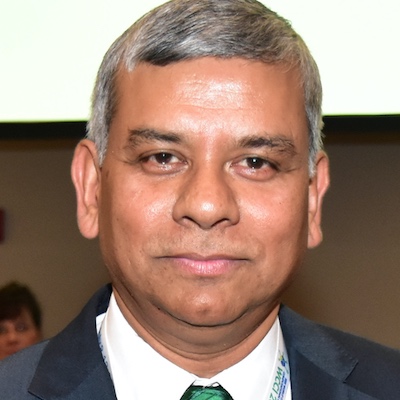
Kalyanmoy Deb: is a Professor at the Department of Computer Science and Engineering and Department of Mechanical Engineering at Michigan State University
Kalyanmoy Deb is an Indian computer scientist. Since 2013, Deb has held the Herman E. & Ruth J. Koenig Endowed Chair in the Department of Electrical and Computing Engineering at Michigan State University. Deb is a Professor at the Department of Computer Science and Engineering and Department of Mechanical Engineering at Michigan State University. Deb established the Kanpur Genetic Algorithms Laboratory at the Indian Institute of Technology, Kanpur in 1997, and the Computational Optimization and Innovation (COIN) Laboratory at Michigan State University in 2013. In 2001, Wiley published a textbook written by Deb titled Multi-Objective Optimization using Evolutionary Algorithms as part of its series on “Systems and Optimization”. In an analysis of the network of authors in the academic field of evolutionary computation by Carlos Cotta and Juan-Julián Merelo, Deb was identified as one of the most central authors in the community and was designated as a “sociometric superstar” of the field. Deb is a highly cited researcher with 138,000+ Google Scholar citations and has an H-index of 116. According to the Web of Science Core Collection database, his IEEE TEC paper on NSGA-II is the first paper by authors who are all Indian to have more than 5,000 citations. Recently, he proposed an extended EMO method—NSGA-III (to appear in IEEE TEC in 2014)—for solving many-objective optimization problems involving 10+ objectives.
22. Thomas G. Dietterich: Ph.D. Stanford, h-index: 77, #citations: 42,257
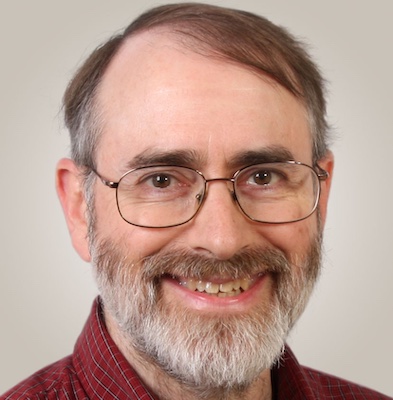
Thomas G. Dietterich: Emeritus Professor of Computer Science at Oregon State University
Thomas G. Dietterich is an emeritus professor of computer science at Oregon State University. He is one of the founders of the field of machine learning. He served as executive editor of Machine Learning (journal) (1992–98) and helped co-found the Journal of Machine Learning Research. In response to the media’s attention to the dangers of artificial intelligence, Dietterich has been quoted for an academic perspective to a broad range of media outlets including National Public Radio, Business Insider, Microsoft Research, CNET, and The Wall Street Journal. Among his research contributions were the invention of error-correcting output coding to multi-class classification, the formalization of the multiple-instance problem, the MAXQ framework for hierarchical reinforcement learning, and the development of methods for integrating non-parametric regression trees into probabilistic graphical models. Professor Dietterich is interested in all aspects of machine learning. There are three major strands of his research. First, he is interested in the fundamental questions of artificial intelligence and how machine learning can provide the basis for building integrated intelligent systems. Second, he is interested in ways that people and computers can collaborate to solve challenging problems. And third, he is interested in applying machine learning to problems in the ecological sciences and ecosystem management as part of the emerging field of computational sustainability.
23. Ebie Frank: Ph.D. University of Waikato, New Zealand
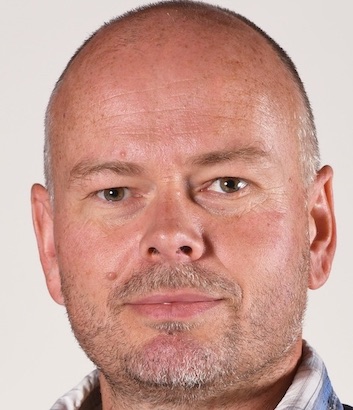
Ebie Frank: Professor of Computer Science at the University of Waikato, New Zealand
Professor Frank is a computer scientist at the University of Waikato, New Zealand, whose primary area of interest is machine learning and its applications. He is a core developer of the WEKA machine learning software and has more than 100 publications on machine learning methods and their application to data mining, text mining, and areas of research outside computer science. He has 83750 citations according to Google Scholar.
24. Brendan Frey: Ph.D. University of Toronto, h-index: 73, #citations: 39,654
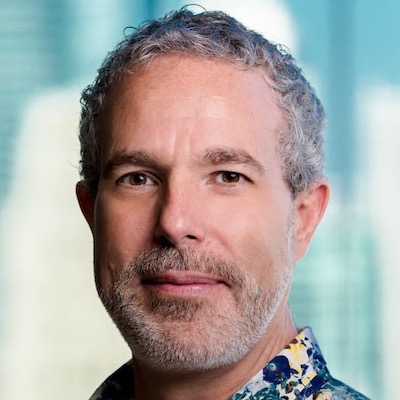
Brendan Frey: Founder and CEO of Deep Genomics, Cofounder of the Vector Institute for Artificial Intelligence, and Professor of Engineering and Medicine at the University of Toronto
Brendan John Frey is a Canadian-born entrepreneur, engineer and scientist. He is Founder and CEO of Deep Genomics, Cofounder of the Vector Institute for Artificial Intelligence, and Professor of Engineering and Medicine at the University of Toronto. Frey is a pioneer in the development of machine learning and artificial intelligence methods, and their use in accurately determining the consequences of genetic mutations and in designing medications that can slow, stop or reverse the progression of disease. As far back as 1995, Frey co-invented one of the first deep learning methods, called the wake-sleep algorithm, the affinity propagation algorithm for clustering and data summarization and the factor graph notation for probability models. In the late 1990s, Frey was a leading researcher in the areas of computer vision, speech recognition, and digital communications. In 2002, a personal crisis led Frey to face the fact that there was a tragic gap between our ability to measure a patient’s mutations and our ability to understand and treat the consequences. Recognizing that biology is too complex for humans to understand, that in the decades to come there would be an exponential growth in biology data, and that machine learning is the best technology we have for discovering relationships in large datasets, Frey set out to build machine learning systems that could accurately predict genome and cell biology. His group pioneered much of the early work in the field and over the next 15 years published more papers in leading-edge journals than any other academic or industrial research lab. In 2015, Frey founded Deep Genomics, with the goal of building a company that can produce effective and safe genetic medicines more rapidly and with a higher rate of success than was previously possible. The company has received 60 million dollars in funding to date from leading Bay Area investors, including the backers of SpaceX and Tesla. In 2019, Deep Genomics became the first company to announce a drug candidate that was discovered by artificial intelligence. He studied neural networks and graphical models as a doctoral candidate at the University of Toronto under the supervision of Geoffrey Hinton.
25. Dileep George: Ph.D. Stanford, h-index: 28, #citations: 3,344
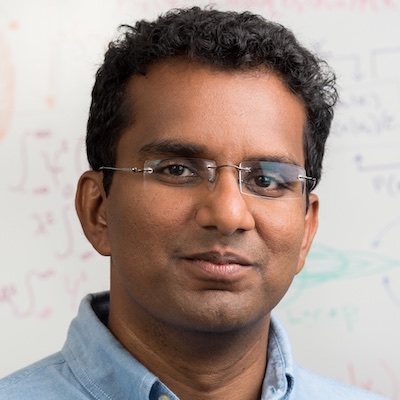
Dileep George: Co-founder of Vicarious (an artificial intelligence company based in the San Francisco Bay Area, California.)
Dileep George is an AI and neuroscience researcher. In 2005, George pioneered hierarchical temporal memory and cofounded the AI research startup Numenta, Inc. with Jeff Hawkins and Donna Dubinsky. In 2010, George left Numenta to join D. Scott Phoenix in founding Vicarious, an AI research project funded by internet billionaires Peter Thiel and Dustin Moskovitz. George has authored 22 patents and many peer-reviewed papers on the mathematics of brain circuits. His research has been featured in the New York Times, BusinessWeek, Scientific Computing, Wired, Wall Street Journal, and on Bloomberg Television. George received his Ph.D. in Electrical Engineering from Stanford University in 2006 and continues his neuroscience research collaboration as Visiting Fellow at the Redwood Center for Theoretical Neuroscience at the University of California, Berkeley.
26. Zoubin Ghahramani: Ph.D. MIT, h-index: 106, #citations: 60,544
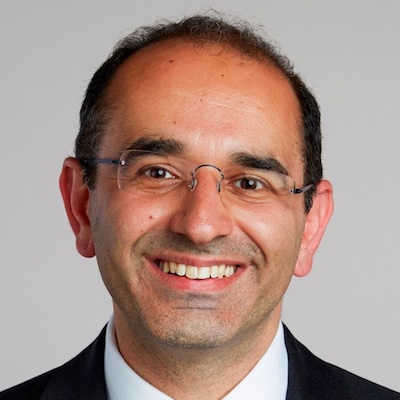
Zoubin Ghahramani: Professor of Information Engineering at the University of Cambridge, and Uber’s Chief Scientist
Zoubin Ghahramani is a British-Iranian researcher and Professor of Information Engineering at the University of Cambridge. He holds joint appointments at University College London and the Alan Turing Institute, and has been a Fellow of St John’s College, Cambridge since 2009. He was Associate Research Professor at Carnegie Mellon University School of Computer Science from 2003-2012. He is also the Chief Scientist of Uber and Deputy Director of the Leverhulme Centre for the Future of Intelligence. He obtained his Ph.D. from the Department of Brain and Cognitive Sciences at the Massachusetts Institute of Technology, supervised by Michael I. Jordan and Tomaso Poggio. Following his Ph.D., Ghahramani moved to the University of Toronto in 1995 as a Postdoctoral Fellow in the Artificial Intelligence Lab, working with Geoffrey Hinton. Ghahramani was elected Fellow of the Royal Society (FRS) in 2015. Ghahramani has made significant contributions in the areas of Bayesian machine learning, as well as graphical models and computational neuroscience. His current research focuses on nonparametric Bayesian modelling and statistical machine learning. He has also worked on artificial intelligence, information retrieval, bioinformatics and statistics which provide the mathematical foundations for handling uncertainty, making decisions, and designing learning systems. He co-founded Geometric Intelligence company in 2014, with Gary Marcus, Doug Bemis, and Ken Stanley. After Uber’s acquisition of the startup he transferred to Uber’s A.I. Labs in 2016. Just after four months he became Chief Scientist, replacing Gary Marcus.
27. Ben Goertzel: Ph.D. Temple University, h-index: 32, #citations: 4,470
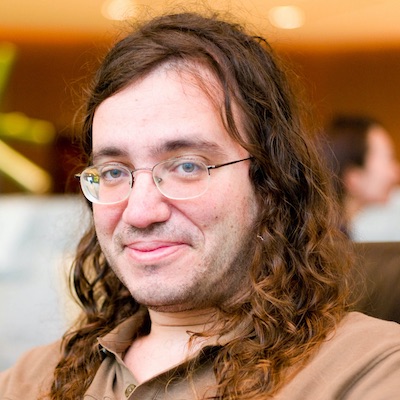
Ben Goertzel: CEO and founder of SingularityNET, a project combining artificial intelligence and blockchain to democratize access to artificial intelligence
Ben Goertzel is an artificial intelligence researcher. He graduated with a Ph.D. in Mathematics from Temple University under the supervision of Avi Lin in 1990. Goertzel is the CEO and founder of SingularityNET, a project combining artificial intelligence and blockchain to democratize access to artificial intelligence. He was a Director of Research of the Machine Intelligence Research Institute (formerly the Singularity Institute). He is also chief scientist and chairman of AI software company Novamente LLC; chairman of the OpenCog Foundation; and advisor to Singularity University. Goertzel was the Chief Scientist of Hanson Robotics, the company that created Sophia the Robot. In May 2007, Goertzel spoke at a Google Tech talk about his approach to creating Artificial General Intelligence. He defines intelligence as the ability to detect patterns in the world and in the agent itself, measurable in terms of emergent behavior of “achieving complex goals in complex environments”. A “baby-like” artificial intelligence is initialized, then trained as an agent in a simulated or virtual world such as Second Life to produce a more powerful intelligence. Knowledge is represented in a network whose nodes and links carry probabilistic truth values as well as “attention values”, with the attention values resembling the weights in a neural network. Several algorithms operate on this network, the central one being a combination of a probabilistic inference engine and a custom version of evolutionary programming. The 2012 documentary The Singularity by independent filmmaker Doug Wolens showcased Goertzel’s vision and understanding of making general AI general thinking.
28. Ian Goodfellow: Ph.D. Université de Montréal, h-index: 67, #citations: 105,538
Ian J. Goodfellow is a researcher working in machine learning, currently employed at Apple Inc. as its director of machine learning in the Special Projects Group. He was previously employed as a research scientist at Google Brain. He has made several contributions to the field of deep learning. Goodfellow obtained his B.S. and M.S. in computer science from Stanford University under the supervision of Andrew Ng, and his Ph.D. in machine learning from the Université de Montréal in April 2014, under the supervision of Yoshua Bengio and Aaron Courville. His thesis is titled “Deep learning of representations and its application to computer vision”. After graduation, Goodfellow joined Google as part of the Google Brain research team. He then left Google to join the newly founded OpenAI institute. He returned to Google Research in March 2017. Goodfellow is best known for inventing generative adversarial networks. He is also the lead author of the textbook Deep Learning. At Google, he developed a system enabling Google Maps to automatically transcribe addresses from photos taken by Street View cars and demonstrated security vulnerabilities of machine learning systems. In 2017, Goodfellow was cited in MIT Technology Review’s 35 Innovators Under 35. In 2019, he was included in Foreign Policy’s list of 100 Global Thinkers. In 2019 Goodfellow left Google and joined Apple Inc. as director of machine learning.
29. Thore Graepel: Ph.D. Technical University of Berlin, h-index: 59, #citations: 28,352
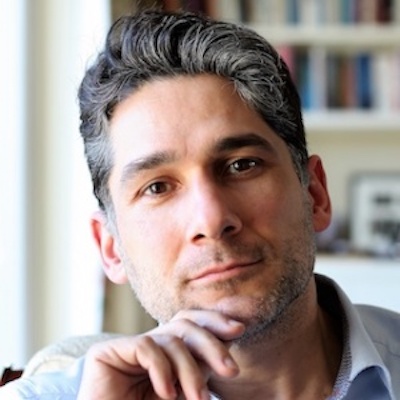
Thore Graepel: is a Research Group Lead at DeepMind, and holds a part-time position as Chair of Machine Learning at University College London
Thore Graepel is a research group lead at DeepMind and holds a part-time position as Chair of Machine Learning at University College London. He studied physics at the University of Hamburg, Imperial College London, and Technical University of Berlin, where he also obtained his Ph.D. in machine learning in 2001. He held post-doctoral positions at ETH Zurich and Royal Holloway College, University of London, before joining Microsoft Research in Cambridge in 2003, where he co-founded the Online Services and Advertising group. Major applications of Thore’s work include Xbox Live’s TrueSkill system for ranking and matchmaking, the AdPredictor framework for click-through rate prediction in Bing, and the Matchbox recommender system which inspired the recommendation engine of Xbox Live Marketplace. Dr. Grapel’s research interests are in artificial intelligence and machine learning and include probabilistic graphical models, reinforcement learning, game theory, and multi-agent systems. He has published over one hundred peer-reviewed papers, is a named co-inventor on dozens of patents, serves on the editorial boards of JMLR and MLJ, and is a founding editor of the book series Machine Learning & Pattern Recognition at Chapman & Hall/CRC. At DeepMind, he has returned to his original passion of understanding and creating intelligence, and contributed to creating AlphaGo, the first computer program to defeat a human professional player in the full-sized game of Go, a feat previously thought to be at least a decade away. Dr. Graepel has extensive experience in technical AI research and ethical publication practices and is part of a cross-functional group of DeepMind team members who come together to review research proposals and assess potential downstream impacts.
30. Carlos Guestrin: Ph.D. Technical University of Berlin, h-index: 72, #citations: 38,677
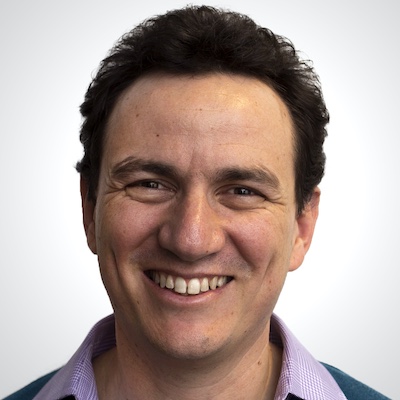
Carlos Guestrin: is the Amazon Professor of Machine Learning at the Computer Science & Engineering Department of the University of Washington. He is also the Senior director of Machine Learning and AI at Apple Inc.
Carlos Guestrin is the Amazon Professor of Machine Learning at the Computer Science & Engineering Department of the University of Washington. He is also the Senior director of Machine Learning and AI at Apple, after the acquisition of Turi Inc. (formerly GraphLab and Dato). Professor Guestrin co-founded Turi, which developed a platform for developers and data scientists to build and deploy intelligent applications. His team also released a number of popular open-source projects, including XGBoost, MXNet, TVM, Turi Create, LIME, GraphLab/PowerGraph, SFrame, and GraphChi. His previous positions include the Finmeccanica Associate Professor at Carnegie Mellon University and senior researcher at the Intel Research Lab in Berkeley. Carlos received his M.Sc. and Ph.D. in Computer Science from Stanford University in 2000 and 2003, respectively, and a Mechatronics Engineer degree from the Polytechnic School of the University of Sao Paulo, Brazil, in 1998. Carlos’ work received awards at a number of conferences and journals: KDD 2007, 2010 and 2019, IPSN 2005 and 2006, VLDB 2004, NIPS 2003 and 2007, UAI 2005, ICML 2005 and 2016, AISTATS 2010, JAIR in 2007 and 2012, ACL 2018, and JWRPM in 2009. He is also a recipient of the ONR Young Investigator Award, NSF Career Award, Alfred P. Sloan Fellowship, IBM Faculty Fellowship, the Siebel Scholarship and the Stanford Centennial Teaching Assistant Award. Carlos was named one of the 2008 ‘Brilliant 10’ by Popular Science Magazine, received the IJCAI Computers and Thought Award and the Presidential Early Career Award for Scientists and Engineers (PECASE). He is a former member of the Information Sciences and Technology (ISAT) advisory group for DARPA.
31. Isabelle Guyon: Ph.D. Pierre and Marie Curie University, Paris, h-index: 66, #citations: 100,069
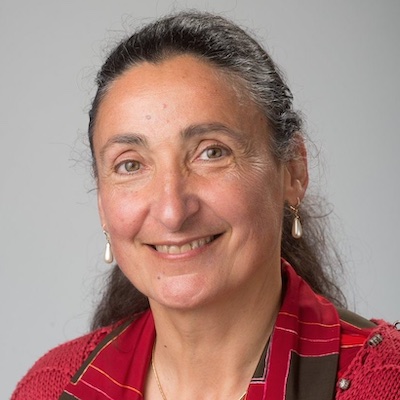
Isabelle Guyon: Chair Professor at the University of Paris-Saclay
Isabelle Guyon is a French-born researcher in machine learning known for her work on support-vector machines, artificial neural networks and bioinformatics. She is a Chair Professor at the University of Paris-Saclay. She is considered to be a pioneer in the field, with her invention of the support-vector machines with Vladimir Vapnik and Bernhard Boser. After graduating from the French engineering school ESPCI Paris in 1985, she joined the group of Gerard Dreyfus at the Université Pierre-et-Marie-Curie to do a Ph.D. on neural networks architectures and training. She worked at Bell Labs for six years, where she explored several research areas, from neural networks to pattern recognition and computational learning theory, with application to handwriting recognition. She collaborated with Yann LeCun, Léon Bottou, Vladimir Vapnik, Corinna Cortes, Yoshua Bengio, Patrice Simard, and met her future husband, Bernhard Boser. In 1996, Guyon left Bell Labs and in Berkeley, she created her own machine learning consulting company, Clopinet. She became interested in medical applications, and used her previous work to classify the genes responsible for different types of cancers. She founded ChaLearn in 2011, a non-profit organization aimed at creating machine learning challenges open to everyone. She was Program Chair of NeurIPS 2016 and became General Chair of NeurIPS in 2017. She is also Action Editor for the Journal of Machine Learning Research and Series Editor for Series: Challenges in Machine Learning. She is a member of the European Laboratory for Learning and Intelligent Systems. In 2016, Guyon came back to France to take the Chair Professorship in Big data between the University of Paris-Saclay and INRIA. With Bernhard Schölkopf and Vladimir Vapnik, she received in 2020 the BBVA Foundation Frontiers of Knowledge Awards for her work in machine learning.
32. Patrick Haffner: Ph.D. École Nationale Supérieure des Télécommunications, Paris, h-index: 34, #citations: 49,085

Patrick Haffner: Lead Inventive Scientist, Interactions LLC.
Patrick Haffner has been an expert in Machine Learning with human in the loop since 1995. He led, with Yann LeCun, the first industrial deployment of the just invented Convolutional Neural Networks for check recognition. He has since provided algorithms and software to scale up AI solutions, in particular for AT&T Services and Network. He currently leads the effort in Machine Learning research at Interactions, innovating new ways to insert AI into interactive conversational systems, with a particular interest in AI algorithms capable of saying “I don’t know” and calling on humans to help as needed.
33. Demis Hassabis: Ph.D. University College London, Paris, h-index: 60, #citations: 41,699
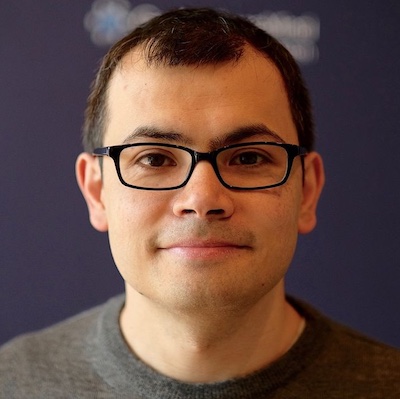
Demis Hassabis: Co-founder and CEO of DeepMind (acquired by Google)
Demis Hassabis is the co-founder and CEO of DeepMind, a neuroscience-inspired AI company that develops general-purpose learning algorithms and uses them to help tackle some of the world’s most pressing challenges. DeepMind’s mission is to “solve intelligence” and then use intelligence “to solve everything else”. Since its founding in London in 2010, DeepMind has published over 200 peer-reviewed papers, five of them in the scientific journal Nature, an unprecedented achievement for a computer science lab. DeepMind’s groundbreaking work includes the development of deep reinforcement learning, combining the domains of deep learning and reinforcement learning. In 2014, DeepMind was acquired by Google and is now part of Alphabet. After leading successful technology startups for a decade and, prior to founding DeepMind, Hassabis completed a Ph.D. in cognitive neuroscience at University College London, followed by postdocs at MIT and Harvard. He is a five-time World Games Champion, recipient of the Royal Society’s Mullard Award, and a fellow of the Royal Society of Arts and the Royal Academy of Engineering. A child prodigy in chess, Hassabis reached master standard at the age of 13 with an Elo rating of 2300. Since the Google acquisition, the company has notched up a number of significant achievements, perhaps the most notable being the creation of AlphaGo, a program that defeated world champion Lee Sedol at the complex game of Go. Go had been considered a holy grail of AI, for its high number of possible board positions and resistance to existing programming techniques. However, AlphaGo beat European champion Fan Hui 5-0 in October 2015 before winning 4-1 against former world champion Lee Sedol in March 2016. Hassabis has predicted that Artificial Intelligence will be “one of the most beneficial technologies of mankind ever” but that significant ethical issues remain. Here are some of Hassabis’s honors and awards:
- 2007 - Science Magazine Top 10 Scientific Breakthroughs (for neuroscience research on imagination)
- 2009 - Fellow of the Royal Society of Arts (FRSA)
- 2013 - Listed on WIRED’s ‘Smart 50’
- 2014 - Mullard Award of the Royal Society
- 2014 - Third most influential Londoner according to the London Evening Standard (2014)
- 2015 - Computer Science Fellow Benefactor, Queens’ College, Cambridge
- 2015 - Financial Times top 50 Entrepreneurs in Europe
- 2016 - Financial Times Digital Entrepreneur of the Year
- 2016 - Honorary Fellow, University College London
- 2016 - London Evening Standard list of influential Londoners, number 6
- 2016 - Royal Academy of Engineering Silver Medal
- 2016 - WIRED Leadership in Innovation
- 2016 - Nature’s “ten people who mattered this year”
- 2017 - Time 100: The 100 Most Influential People
- 2017 - The Asian Awards: Outstanding Achievement in Science and Technology
- 2017 - Fellow of the Royal Academy of Engineering
- 2017 - American Academy of Achievement: Golden Plate Award
- 2017 - Appointed Commander of the Order of the British Empire (CBE) in the 2018 New Year Honours for “services to Science and Technology”.
- 2018 - Elected a Fellow of the Royal Society (FRS) in May 2018
- 2018 - Adviser to the UK’s Government Office for Artificial Intelligence
- 2019 - Winner of UKtech50 (the 50 most influential people in UK technology) from Computer Weekly
- 2020 - The 50 most influential people in Britain from British GQ magazine
- 2020 - Dan David Prize
34. Trevor Hastie: Ph.D. Stanford, h-index: 132, #citations: 243,031
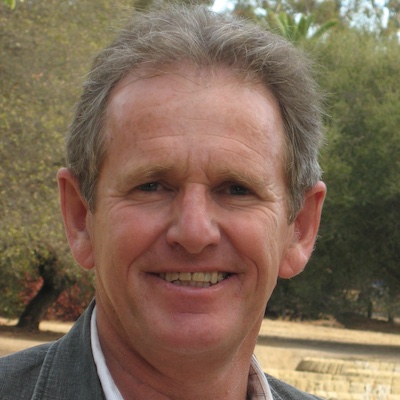
Trevor Hastie: John A. Overdeck Professor of Mathematical Sciences and Professor of Statistics at Stanford University
Trevor John Hastie is a South African and American statistician and computer scientist. He is currently serving as the John A. Overdeck Professor of Mathematical Sciences and Professor of Statistics at Stanford University. Hastie is known for his contributions to applied statistics, especially in the field of machine learning, data mining, and bioinformatics. He has authored several popular books in statistical learning, including The Elements of Statistical Learning: Data Mining, Inference, and Prediction. Hastie has been listed as an ISI Highly Cited Author in Mathematics by the ISI Web of Knowledge. Hastie worked at the AT&T Bell Laboratories in Murray Hill, New Jersey and remained there for nine years. He joined Stanford University in 1994 as Associate Professor in Statistics and Biostatistics. He was promoted to full Professor in 1999. During the period 2006–2009, he was the chair of the Department of Statistics at Stanford University. In 2013 he was named the John A. Overdeck Professor of Mathematical Sciences. Hastie has been a Fellow of the Royal Statistical Society since 1979. He is also an elected Fellow of several professional and scholarly societies, including the Institute of Mathematical Statistics, the American Statistical Association, and the South African Statistical Society. He is a recipient of the ‘Myrto Lefkopolou Distinguished Lectureship’ award of the Biostatistics Department at the Harvard School of Public Health. In 2018, he was elected a member of the National Academy of Sciences. In 2019 Hastie became a foreign member of the Royal Netherlands Academy of Arts and Sciences.
35. Jeffrey Hawkins: graduated from Cornell University

Jeffrey Hawkins: Co-founder of Numenta, and Redwood Center for Theoretical Neuroscience
Jeffrey Hawkins is the American founder of Palm Computing and Handspring where he invented the PalmPilot and Treo, respectively. He has since turned to work on neuroscience full-time, founding the Redwood Center for Theoretical Neuroscience (formerly the Redwood Neuroscience Institute) in 2002 and Numenta in 2005. Numenta is based in Redwood City, California and has a dual mission: to reverse-engineer the neocortex and enable machine intelligence technology based on brain theory. Hawkins and his cofounders have been using biological information about the structure of the neocortex to guide the development of their theory on how the brain works. They have come up with a machine intelligence technology called Hierarchical temporal memory (HTM). HTM can find patterns in noisy streaming data, model the latent causes, and make predictions about what patterns will come next. Hawkins is the author of the book On Intelligence which explains his memory-prediction framework theory of the brain. In 2003, Hawkins was elected as a member of the National Academy of Engineering “for the creation of the hand-held computing paradigm and the creation of the first commercially successful example of a hand-held computing device.” He also serves on the Advisory Board of the Secular Coalition for America where he has advised on the acceptance and inclusion of nontheism in American life.
36. Geoffrey Hinton: Ph.D. University of Edinburgh, h-index: 156, #citations: 375,837
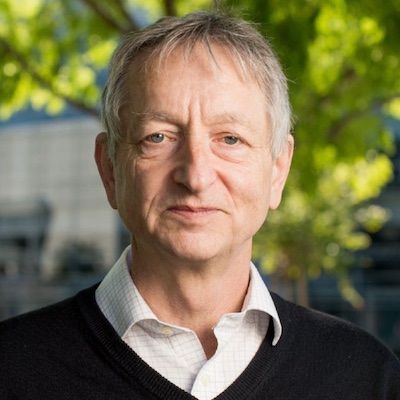
Geoffrey Hinton: Emeritus Distinguished Professor of Computer Science, University of Toronto
Geoffrey Everest Hinton is an English Canadian cognitive psychologist and computer scientist, most noted for his work on artificial neural networks. Since 2013 he divides his time working for Google (Google Brain) and the University of Toronto. In 2017, he co-founded and became the Chief Scientific Advisor of the Vector Institute in Toronto. With David Rumelhart and Ronald J. Williams, Hinton was co-author of a highly cited paper published in 1986 that popularized the backpropagation algorithm for training multi-layer neural networks, although they were not the first to propose the approach. Hinton is viewed by some as a leading figure in the deep learning community and is referred to by some as the “Godfather of Deep Learning”. The dramatic image-recognition milestone of the AlexNet designed by his student Alex Krizhevsky for the ImageNet challenge 2012 helped to revolutionize the field of computer vision. Hinton was awarded the 2018 Turing Award alongside Yoshua Bengio and Yann LeCun for their work on deep learning. Hinton—together with Yoshua Bengio and Yann LeCun—are referred to by some as the “Godfathers of AI” and “Godfathers of Deep Learning”. He received his Ph.D. in artificial intelligence in 1978 for research supervised by Christopher Longuet-Higgins at the University of Edinburgh. After his Ph.D. he worked at the University of Sussex, and then the University of California, San Diego, and Carnegie Mellon University. He was the founding director of the Gatsby Charitable Foundation Computational Neuroscience Unit at University College London, and is currently a professor in the computer science department at the University of Toronto. He holds a Canada Research Chair in Machine Learning, and is currently an advisor for the Learning in Machines & Brains program at the Canadian Institute for Advanced Research. Hinton joined Google in March 2013 when his company, DNNresearch Inc., was acquired. While Hinton was a professor at Carnegie Mellon University (1982–1987), David E. Rumelhart and Hinton and Ronald J. Williams applied the backpropagation algorithm to multi-layer neural networks. Their experiments showed that such networks can learn useful internal representations of data. During the same period, Hinton co-invented Boltzmann machines with David Ackley and Terry Sejnowski. His other contributions to neural network research include distributed representations, time delay neural network, mixtures of experts, Helmholtz machines and Product of Experts. Notable former Ph.D. students and postdoctoral researchers from his group include Richard Zemel, Brendan Frey, Radford M. Neal, Ruslan Salakhutdinov, Ilya Sutskever, Yann LeCun and Zoubin Ghahramani. Here are some of his honours and awards:
- 1998: elected a Fellow of the Royal Society (FRS)
- 2001: the first winner of the Rumelhart Prize
- 2001: awarded an Honorary Doctorate from the University of Edinburgh
- 2005: recipient of the IJCAI Award for Research Excellence lifetime-achievement award
- 2011: Herzberg Canada Gold Medal for Science and Engineering
- 2013: awarded an Honorary Doctorate from the Université de Sherbrooke
- 2016: elected a foreign member of National Academy of Engineering
- 2016: IEEE/RSE Wolfson James Clerk Maxwell Award
- 2016: BBVA Foundation Frontiers of Knowledge Award
- 2018: Turing Award (with Yann LeCun, and Yoshua Bengio)
- 2018: awarded a Companion of the Order of Canada
37. Sepp Hochreiter: Ph.D. Technical University of Munich, h-index: 40, #citations: 51,780
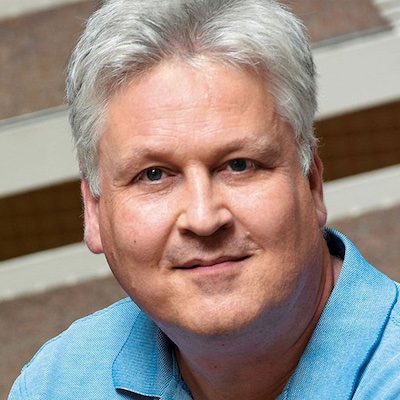
Sepp Hochreiter: Leds the Institute for Machine Learning at the Johannes Kepler University of Linz
Sepp Hochreiter is a German computer scientist. Since 2018 he has led the Institute for Machine Learning at the Johannes Kepler University of Linz after having led the Institute of Bioinformatics from 2006 to 2018. In 2017 he became the head of the Linz Institute of Technology (LIT) AI Lab which focuses on advancing research on artificial intelligence. Previously, he was at the Technical University of Berlin, at the University of Colorado at Boulder, and at the Technical University of Munich. Sepp Hochreiter has made numerous contributions in the fields of machine learning, deep learning and bioinformatics. He developed the long short-term memory (LSTM) for which the first results were reported in his diploma thesis in 1991. The main LSTM paper appeared in 1997 and is considered as a discovery that is a milestone in the timeline of machine learning. The foundation of deep learning was led by his analysis of the vanishing or exploding gradient. He contributed to meta learning and proposed flat minima as preferable solutions of learning artificial neural networks to ensure a low generalization error. He developed new activation functions for neural networks like exponential linear units (ELUs) or scaled ELUs (SELUs) to improve learning. He contributed to reinforcement learning via actor-critic approaches and his RUDDER method. He applied biclustering methods to drug discovery and toxicology. He extended support vector machines to handle kernels that are not positive definite with the “Potential Support Vector Machine” (PSVM) model, and applied this model to feature selection, especially to gene selection for microarray data. Also in biotechnology, he developed “Factor Analysis for Robust Microarray Summarization” (FARMS). Sepp Hochreiter introduced modern Hopfield networks with continuous states and applied them to the task of immune repertoire classification.
38. Thomas Hofmann: Ph.D. University of Bonn, h-index: 60, #citations: 35,416
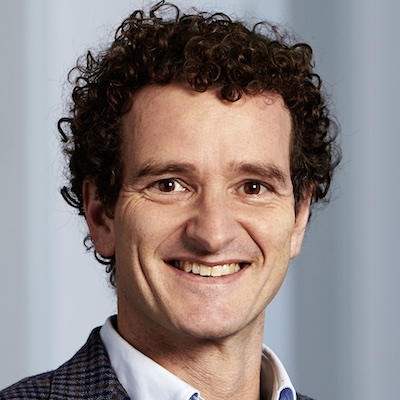
Thomas Hofmann: full Professor of Data Analytics in the Department of Computer Science at ETH Zurich
Thomas Hofmann has been full professor of Data Analytics in the Department of Computer Science at ETH Zurich since April 2014. In 1997 he received his Ph.D. in Computer Science from the University of Bonn, Germany. He then worked as a postdoctoral fellow in the Artificial Intelligence Laboratory at MIT and the International Computer Science Institute of the University of California, Berkeley. In 1999 he joined Brown University in Providence, Rhode Island as an assistant professor. In 2004 he became director of the Institute for Integrated Publication and Information Systems at the Fraunhofer Institute and Professor of Computer Science at the Technical University of Darmstadt, Germany. In 2006, he moved into the private sector and served as Director of Engineering of the research department of Google Switzerland in Zurich. Thomas Hofmann is co-founder (2001) of the company Recommind, which deals with search techniques.
39. Jeremy Howard: graduated from the University of Melbourne
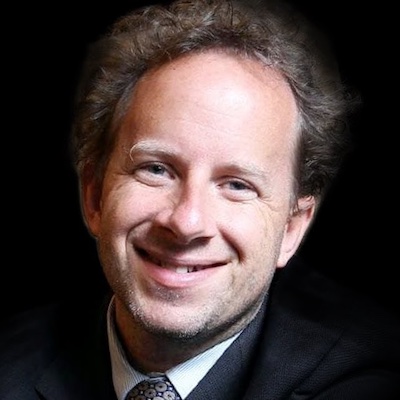
Jeremy Howard: Co-founder of fast.ai, a research institute dedicated to make Deep Learning more accessible
Jeremy Howard is an Australian data scientist and entrepreneur. He began his career in management consulting, at McKinsey & Company and AT Kearney. Howard went on to co-found FastMail in 1999 (sold to Opera Software) and Optimal Decisions Group (sold to ChoicePoint). Early in his career, Howard contributed to open source projects, particularly the Perl programming language, Cyrus IMAP server, and Postfix SMTP server. He helped develop the Perl language, as chair of the Perl6-data working group, and author of RFCs. Howard first became involved with Kaggle, after becoming the globally top-ranked participant in data science competitions in both 2010 and 2011. He later joined Kaggle, an online community for data scientists, as President and Chief Scientist. Together with Rachel Thomas, he is the co-founder of fast.ai, a research institute dedicated to make Deep Learning more accessible. Previously, he was the CEO and Founder at Enlitic, an advanced machine learning company in San Francisco, California. Howard teaches data science at Singularity University. He is also a Young Global Leader with the World Economic Forum, and spoke at the World Economic Forum Annual Meeting 2014 on “Jobs For The Machines.” Howard advised Khosla Ventures as their Data Strategist, identifying the biggest opportunities for investing in data-driven startups and mentoring their portfolio companies to build data-driven businesses.
40. Thomas S. Huang: Sc.D. MIT, h-index: 159, #citations: 163,621
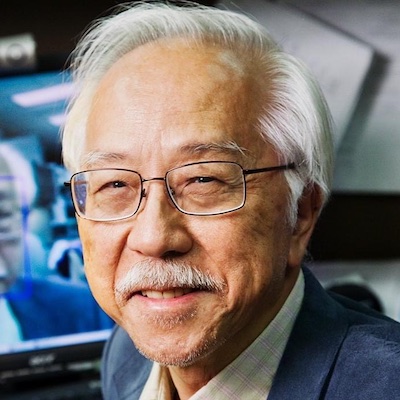
Thomas S. Huang: was a researcher and professor emeritus at the University of Illinois at Urbana-Champaign (UIUC)
Thomas Shi-Tao Huang was a Chinese-born American electrical engineer and computer scientist. He was a researcher and professor emeritus at the University of Illinois at Urbana-Champaign (UIUC). Huang was one of the leading figures in computer vision, pattern recognition and human computer interaction. At MIT he worked initially with Peter Elias, who was interested in information theory and image coding, and then with William F. Schreiber. Huang was supervised by Schreiber for both his M.S. thesis, Picture statistics and linearly interpolative coding (1960), and his Sc.D. thesis, Pictorial noise (1963). Huang accepted a position on the faculty of the Department of Electrical Engineering at MIT, and remained there from 1963 to 1973. He accepted a position as an electrical engineering professor and director of the Information and Signal Processing Laboratory at Purdue University in 1973, remaining there until 1980. In 1980 he accepted a chair in electrical engineering at the University of Illinois at Urbana-Champaign (UIUC). On April 15, 1996, Huang became the first William L. Everitt Distinguished Professor in Electrical & Computer Engineering at UIUC. He was involved with the Coordinated Science Laboratory (CSL), and served as head of the Image Formation and Processing Group of the Beckman Institute for Advanced Science and Technology and co-chair of the Beckman Institute’s research track on Human Computer Intelligent Interaction. As of 2012, he was named a Swanlund Chair, the highest endowed title at UIUC. Huang received numerous honors and awards in his career, including:
- Foreign Member, Chinese Academy of Sciences, 2002
- Foreign Member, Chinese Academy of Engineering, 2001
- Member, United States National Academy of Engineering, 2001
- Fellow, Japan Society for the Promotion of Science, 1986
- Fellow, SPIE
- Fellow, International Association of Pattern Recognition (IAPR)
- Fellow, Optical Society of America, 1986
- Life Fellow, IEEE, 1979
- Azriel Rosenfeld Award, 2011
- HP Innovation Research Award, 2009
- Okawa Prize for Information and Telecommunications Technology, 2005[42]
- King-Sun Fu Prize, International Association of Pattern Recognition (IAPR), 2002
- Information Science Award, Association of Intelligent Machinery, 2002
- IEEE Jack S. Kilby Signal Processing Medal, 2001 (together with Arun N. Netravali)
- IEEE Achievement Award for Contributions to Motion Analysis, 2000
- IEEE Third Millennium Medal, 2000
41. Anil K. Jain: Ph.D. Ohio State University, h-index: 190, #citations: 212,206
Anil K. Jain is an Indian-American computer scientist and University Distinguished Professor in the Department of Computer Science & Engineering at Michigan State University, known for his contributions in the fields of pattern recognition, computer vision and biometric recognition. Based on his Google Scholar profile, he has an h-index of 188, which is the highest among computer scientists identified in a survey published by UCLA. In 2016, he was elected to the National Academy of Engineering and Indian National Academy of Engineering “for contributions to the engineering and practice of biometrics”. In 2007, he received the W. Wallace McDowell Award, the highest technical honor awarded by the IEEE Computer Society, for his pioneering contributions to theory, technique, and practice of pattern recognition, computer vision, and biometric recognition systems. He has also received numerous other awards, including the Guggenheim Fellowship, Humboldt Research Award, IAPR Pierre Devijver Award, Fulbright Fellowship, IEEE Computer Society Technical Achievement award, IAPR King-Sun Fu Prize, and IEEE ICDM Research Contribution Award. He is a Fellow of the ACM, IEEE, AAAS, IAPR and SPIE. He also received best paper awards from the IEEE Transactions on Neural Networks (1996) and the Pattern Recognition journal (1987, 1991, and 2005). He served as a member of the U.S. National Academies panels on Information Technology, Whither Biometrics and Improvised Explosive Devices (IED). He also served as a member of the Defense Science Board, Forensic Science Standards Board, and AAAS Latent Fingerprint Working Group. In 2019, he was elected a Foreign Member of the Chinese Academy of Sciences.
42. Thorsten Joachims: Ph.D. University of Dortmund, h-index: 70, #citations: 64,509
Thorsten Joachims is a Professor in the Department of Computer Science and in the Department of Information Science at Cornell University. He has served a two-year term as Chair of the Department of Information Science. He joined Cornell in 2001 after finishing his Ph.D. as a student of Prof. Morik at the AI-unit of the University of Dortmund, from where he also received a Diploma in Computer Science in 1997. Between 2000 and 2001 he worked as a PostDoc at the GMD in the Knowledge Discovery Team of the Institute for Autonomous Intelligent Systems. From 1994 to 1996 he spent one and a half years at Carnegie Mellon University as a visiting scholar of Prof. Tom Mitchell. Working with his students and collaborators, his papers won 9 Best Paper Awards and 4 Test-of-Time Awards. Thorsten Joachims is an ACM Fellow, AAAI Fellow, and Humboldt Fellow. His research topics include: Machine Learning Methods and Theory, Learning from Human Behavioral Data and Implicit Feedback, and Machine Learning for Search Engines, Recommendation, Education, and other Human-Centered Tasks.
43. Michael Jordan: Ph.D. University of California, San Diego, h-index: 172, #citations: 189,301
Michael Irwin Jordan is an American scientist, professor at the University of California, Berkeley and researcher in machine learning, statistics, and artificial intelligence. He is one of the leading figures in machine learning, and in 2016 Science reported him as the world’s most influential computer scientist. Jordan received his Ph.D. in Cognitive Science in 1985 from the University of California, San Diego. At the University of California, San Diego, Jordan was a student of David Rumelhart and a member of the PDP Group in the 1980s. Jordan is currently a full professor at the University of California, Berkeley where his appointment is split across the Department of Statistics and the Department of EECS. He was a professor at the Department of Brain and Cognitive Sciences at MIT from 1988 to 1998. In the 1980s Jordan started developing recurrent neural networks as a cognitive model. In recent years, his work is less driven from a cognitive perspective and more from the background of traditional statistics. Jordan popularised Bayesian networks in the machine learning community and is known for pointing out links between machine learning and statistics. He was also prominent in the formalisation of variational methods for approximate inference and the popularisation of the expectation-maximization algorithm in machine learning. In 2001, Jordan and others resigned from the editorial board of the journal Machine Learning. In a public letter, they argued for less restrictive access and pledged support for a new open access journal, the Journal of Machine Learning Research, which was created by Leslie Kaelbling to support the evolution of the field of machine learning. Jordan has received numerous awards, including a best student paper award (with X. Nguyen and M. Wainwright) at the International Conference on Machine Learning (ICML 2004), a best paper award (with R. Jacobs) at the American Control Conference (ACC 1991), the ACM - AAAI Allen Newell Award, the IEEE Neural Networks Pioneer Award, and an NSF Presidential Young Investigator Award. In 2010 he was named a Fellow of the Association for Computing Machinery “for contributions to the theory and application of machine learning.” Jordan is a member of the National Academy of Science, a member of the National Academy of Engineering and a member of the American Academy of Arts and Sciences. He has been named a Neyman Lecturer and a Medallion Lecturer by the Institute of Mathematical Statistics. He received the David E. Rumelhart Prize in 2015 and the ACM/AAAI Allen Newell Award in 2009. He also won the 2020 IEEE John von Neumann Medal.
44. Leslie P. Kaelbling: Ph.D. Stanford, h-index: 60, #citations: 29,344
Leslie Pack Kaelbling is an American roboticist and the Panasonic Professor of Computer Science and Engineering at the Massachusetts Institute of Technology. She is widely recognized for adapting partially observable Markov decision processes from operations research for application in artificial intelligence and robotics. Kaelbling received the IJCAI Computers and Thought Award in 1997 for applying reinforcement learning to embedded control systems and developing programming tools for robot navigation. In 2000, she was elected as a Fellow of the Association for the Advancement of Artificial Intelligence. Kaelbling received a Ph.D. in Computer Science in 1990 from Stanford University. During this time she was also affiliated with the Center for the Study of Language and Information. She then worked at SRI International and the affiliated robotics spin-off Teleos Research before joining the faculty at Brown University. She left Brown in 1999 to join the faculty at MIT. Her research focuses on decision-making under uncertainty, machine learning, and sensing with applications to robotics.
45. Andrej Karpathy: Ph.D. Stanford, h-index: 11, #citations: 30,033
Andrej Karpathy is the director of artificial intelligence and Autopilot Vision at Tesla. He specializes in deep learning and image recognition and understanding. Andrej Karpathy was born in Slovakia and moved with his family to Toronto when he was 15. He completed his Computer Science and Physics undergraduate degree at University of Toronto in 2009 and completed his master’s degree at University of British Columbia in 2011, where he worked on physically-simulated figures. He graduated with Ph.D. from Stanford University in 2015 under the supervision of Fei-Fei Li, focusing on the intersection of natural language processing and computer vision, and deep learning models suited for this task. He joined the artificial intelligence group OpenAI as a research scientist in September 2016 and became Tesla’s director of artificial intelligence in June 2017. Karpathy was named one of the MIT Technology Review Innovators Under 35 for the year 2020.
46. Pushmeet Kohli: Ph.D. Oxford, h-index: 80, #citations: 30,430
Pushmeet Kohli is a Principal Scientist and Team Leader at DeepMind. Before joining DeepMind, Pushmeet was the director of research at the Cognition group at Microsoft. During his 10 years at Microsoft, Pushmeet worked in Microsoft labs in Seattle, Cambridge and Bangalore and took a number of roles and duties including being technical advisor to Rick Rashid, the Chief Research Officer of Microsoft. Pushmeet’s research revolves around Intelligent Systems and Computational Sciences, and he publishes in the fields of Machine Learning, Computer Vision, Information Retrieval, and Game Theory. His current research interests include 3D Reconstruction and Rendering, Probabilistic Programming, Interpretable and Verifiable Knowledge Representations from Deep Models. He is also interested in Conversation agents for Task completion, Machine learning systems for Healthcare and 3D rendering and interaction for augmented and virtual reality. Pushmeet has won a number of awards and prizes for his research. His Ph.D. thesis, titled “Minimizing Dynamic and Higher Order Energy Functions using Graph Cuts”, was the winner of the British Machine Vision Association’s “Sullivan Doctoral Thesis Award”, and was a runner-up for the British Computer Society’s “Distinguished Dissertation Award”. Pushmeet’s papers have appeared in Computer Vision (ICCV, CVPR, ECCV, PAMI, IJCV, CVIU, BMVC, DAGM), Machine Learning, Robotics and AI (NIPS, ICML, AISTATS, AAAI, AAMAS, UAI, ISMAR), Computer Graphics (SIGGRAPH, Eurographics), and HCI (CHI, UIST) conferences. They have won awards in ICVGIP 2006, 2010, ECCV 2010, ISMAR 2011, TVX 2014, CHI 2014, WWW 2014 and CVPR 2015. His research has also been the subject of a number of articles in popular media outlets such as Forbes, Wired, BBC, New Scientist and MIT Technology Review. Pushmeet is a part of the Association for Computing Machinery’s (ACM) Distinguished Speaker Program.
47. Daphne Koller: Ph.D. Stanford, h-index: 142, #citations: 87,504
Daphne Koller is an Israeli-American computer scientist. She has been a Professor in the Department of Computer Science at Stanford University and a MacArthur Fellowship recipient. She is one of the founders of Coursera, an online education platform. Her general research area is artificial intelligence and its applications in the biomedical sciences. Koller was featured in a 2004 article by MIT Technology Review titled “10 Emerging Technologies That Will Change Your World” concerning the topic of Bayesian machine learning. Koller received a bachelor’s degree from the Hebrew University of Jerusalem in 1985, at the age of 17, and a master’s degree from the same institution in 1986, at the age of 18. She completed her Ph.D. at Stanford in 1993 under the supervision of Joseph Halpern. After her Ph.D., Koller did postdoctoral research at University of California, Berkeley. She was elected a member of the National Academy of Engineering in 2011 and was elected a fellow of the American Academy of Arts and Sciences in 2014. She and Andrew Ng, a fellow Stanford computer science professor in the AI lab, launched Coursera in 2012. She served as the co-CEO with Ng, and then as President of Coursera. She was recognized for her contributions to online education by being named one of Newsweek’s 10 Most Important People in 2010, Time magazine’s 100 Most Influential People in 2012, and Fast Company’s Most Creative People in 2014. She left Coursera in 2016 to become chief computing officer at Calico. In 2018, she left Calico to start and lead Insitro, a drug discovery startup. Koller is primarily interested in representation, inference, learning, and decision making, with a focus on applications to computer vision and computational biology. Along with Suchi Saria and Anna Penn of Stanford University, Koller developed PhysiScore, which uses various data elements to predict whether premature babies are likely to have health issues. Here are the list of books recommended by Dr. Koller on Doradolist.
48. Alex Krizhevsky: Ph.D. University of Toronto, h-index: 25, #citations: 111,580
Alex Krizhevsky is an Ukrainian-Canadian computer scientist most noted for his work on artificial neural networks and deep learning. Alex Krizhevsky is the creator of AlexNet, which is the name of a convolutional neural network. Alex Krizhevsky, published the AlexNet with Ilya Sutskever and Krizhevsky’s doctoral advisor Geoffrey Hinton. Shortly after having won the ImageNet challenge 2012 through AlexNet, he and his colleagues sold their startup DNN Research Inc. to Google. Krizhevsky left Google in September 2017 when he lost interest in the work. At the company Dessa, Krizhevsky will advise and help research new deep-learning techniques. Many of his numerous papers on machine learning and computer vision are frequently cited by other researchers.
49. John Langford: Ph.D. Carnegie Mellon University, h-index: 66, #citations: 37,885
John Langford is a computer scientist working in machine learning and learning theory, a field that he says “is shifting from an academic discipline to an industrial tool”. He is well known for work on the Isomap embedding algorithm, CAPTCHA challenges, Cover Trees for nearest neighbor search, Contextual Bandits (which he coined) for reinforcement learning applications, and learning reductions. John is the author of the blog hunch.net and the principal developer of Vowpal Wabbit. He works at Microsoft Research New York, of which he was one of the founding members, and was previously affiliated with Yahoo! Research, Toyota Technological Institute at Chicago, and IBM’s Watson Research Center. He studied Physics and Computer Science at Caltech, earning a double bachelor’s degree in 1997, and he received his Ph.D. in Computer Science from Carnegie Mellon University in the year of 2002. John was the program co-chair for the 2012 International Conference on Machine Learning (ICML), general chair for the 2016 ICML, and is the President of ICML from 2019–2021.
50. Hugo Larochelle: Ph.D. Université de Montréal, h-index: 51, #citations: 35,482
Hugo Larochelle currently leads the Google Brain group in Montreal. His main area of expertise is deep learning. His previous work includes unsupervised pre training with autoencoders, denoising autoencoders, visual attention-based classification, neural autoregressive distribution models. More broadly, he is interested in applications of deep learning to generative modeling, reinforcement learning, meta-learning, natural language processing and computer vision. Previously, Hugo was Associate Professor at the Université de Sherbrooke (UdeS). He also co-founded Whetlab, which was acquired in 2015 by Twitter, where he then worked as a Research Scientist in the Twitter Cortex group. From 2009 to 2011, he was also a member of the machine learning group at the University of Toronto, as a postdoctoral fellow under the supervision of Geoffrey Hinton. He obtained my Ph.D. at the Université de Montréal, under the supervision of Yoshua Bengio. His academic involvement includes being a member of the boards for the International Conference on Machine Learning (ICML) and for the International Conference on Learning Representations. He was program chair for ICLR 2015, 2016 and 2017, and program chair for the Neural Information Processing Systems (NeurIPS) conference for 2018 and 2019. Dr. Larochelle has a popular online course on deep learning and neural networks, freely accessible on YouTube.
51. Yann LeCun: Ph.D. Pierre and Marie Curie University, Paris, h-index: 124, #citations: 162,769
Yann André LeCun is a French computer scientist working primarily in the fields of machine learning, computer vision, mobile robotics, and computational neuroscience. He is the Silver Professor of the Courant Institute of Mathematical Sciences at New York University, and Vice President, Chief AI Scientist at Facebook. He is well known for his work on optical character recognition and computer vision using convolutional neural networks (CNN), and is a founding father of convolutional nets. He is also one of the main creators of the DjVu image compression technology (together with Léon Bottou and Patrick Haffner). He co-developed the Lush programming language with Léon Bottou. He is co-recipient of the 2018 ACM A.M. Turing Award for his work in deep learning. LeCun - together with Geoffrey Hinton and Yoshua Bengio - are referred to by some as the “Godfathers of AI” and “Godfathers of Deep Learning”. LeCun received a Ph.D. in Computer Science from Université Pierre et Marie Curie in 1987 during which he proposed an early form of the back-propagation learning algorithm for neural networks. He was a postdoctoral research associate in Geoffrey Hinton’s lab at the University of Toronto from 1987 to 1988. In 1996, he joined AT&T Labs-Research as head of the Image Processing Research Department, which was part of Lawrence Rabiner’s Speech and Image Processing Research Lab, and worked primarily on the DjVu image compression technology. His collaborators at AT&T include Léon Bottou and Vladimir Vapnik. After a brief tenure as a Fellow of the NEC Research Institute (now NEC-Labs America) in Princeton, NJ, he joined New York University (NYU) in 2003. He is also a professor at the Tandon School of Engineering. At NYU, he has worked primarily on Energy-Based Models for supervised and unsupervised learning, feature learning for object recognition in Computer Vision, and mobile robotics. In 2012, he became the founding director of the NYU Center for Data Science. On December 9, 2013, LeCun became the first director of Facebook AI Research in New York City, and stepped down from the NYU-CDS directorship in early 2014. In 2013, he and Yoshua Bengio co-founded the International Conference on Learning Representations, which adopted a post-publication open review process he previously advocated on his website. He was the chair and organizer of the “Learning Workshop” held every year between 1986 and 2012 in Snowbird, Utah. He is a member of the Science Advisory Board of the Institute for Pure and Applied Mathematics at UCLA. He is the Co-Director of the Learning in Machines and Brain research program (formerly Neural Computation & Adaptive Perception) of CIFAR.
52. Honglak Lee: Ph.D. Stanford, h-index: 65, #citations: 30,797
Honglak Lee is currently a Research Scientist at Google Brain and an Associate Professor of Computer Science and Engineering at the University of Michigan, Ann Arbor. He received his Ph.D. from the Computer Science Department at Stanford University in 2010, advised by Prof. Andrew Ng. His research focuses on deep learning and representation learning, which spans over unsupervised and semi-supervised learning, supervised learning, transfer learning, reinforcement learning, structured prediction, graphical models, and optimization. His methods have been successfully applied to computer vision and other perception problems. He received best paper awards at ICML and CEAS. He has served as a guest editor of IEEE TPAMI Special Issue on Learning Deep Architectures, as well as area chairs of ICML, NIPS, CVPR, ICCV, ECCV, AAAI, IJCAI, and ICLR. He received the Google Faculty Research Award (2011), NSF CAREER Award (2015), and was selected as one of AI’s 10 to Watch by IEEE Intelligent Systems (2013) and a research fellow by Alfred P. Sloan Foundation (2016).
53. Jure Leskovec: Ph.D. Carnegie Mellon University, h-index: 105, #citations: 70,641
Jure Leskovec is a Slovenian computer scientist, entrepreneur and associate professor of Computer Science at Stanford University focusing on networks. He is the chief scientist at Pinterest and investigator at Chan Zuckerberg Biohub. In 2004, Leskovec received a Diploma in Computer Science from the University of Ljubljana, Slovenia, researching semantic networks-based creation of abstracts, using machine learning; in 2008 he received a Ph.D. in Computational and Statistical Learning from the Carnegie Mellon University. Leskovec received the Lagrange Prize in 2015, and Alfred P. Sloan Fellowship in 2012. Leskovec’s general research area is applied machine learning and data science for large interconnected systems. Focuses on modeling complex, richly-labeled relational structures, graphs, and networks for systems at all scales, from interactions of proteins in a cell to interactions between humans in a society. Applications include commonsense reasoning, recommender systems, computational social science, and computational biology with an emphasis on drug discovery.
54. Sergey Levine: Ph.D. Stanford, h-index: 82, #citations: 30,137
Sergey Levine received a BS and MS in Computer Science from Stanford University in 2009, and a Ph.D. in Computer Science from Stanford University in 2014. He joined the faculty of the Department of Electrical Engineering and Computer Sciences at UC Berkeley in fall 2016. His work focuses on machine learning for decision making and control, with an emphasis on deep learning and reinforcement learning algorithms. Applications of his work include autonomous robots and vehicles, as well as computer vision and graphics. His research includes developing algorithms for end-to-end training of deep neural network policies that combine perception and control, scalable algorithms for inverse reinforcement learning, deep reinforcement learning algorithms, and more. His work has been featured in many popular press outlets, including the New York Times, the BBC, MIT Technology Review, and Bloomberg Business.
55. Fei-Fei Li: Ph.D. Caltech, h-index: 104, #citations: 102,712
Dr. Fei-Fei Li is the inaugural Sequoia Professor in the Computer Science Department at Stanford University, and Co-Director of Stanford’s Human-Centered AI Institute. She served as the Director of Stanford’s AI Lab from 2013 to 2018. And during her sabbatical from Stanford from January 2017 to September 2018, she was Vice President at Google and served as Chief Scientist of AI/ML at Google Cloud. Dr. Fei-Fei Li obtained her B.A. degree in physics from Princeton in 1999 with High Honors, and her Ph.D. degree in electrical engineering from California Institute of Technology (Caltech) in 2005. She joined Stanford in 2009 as an assistant professor. Prior to that, she was on faculty at Princeton University (2007-2009) and University of Illinois Urbana-Champaign (2005-2006). Dr. Fei-Fei Li’s current research interests include cognitively inspired AI, machine learning, deep learning, computer vision and AI+healthcare especially ambient intelligent systems for healthcare delivery. In the past she has also worked on cognitive and computational neuroscience. Dr. Li has published more than 200 scientific articles in top-tier journals and conferences, including Nature, PNAS, Journal of Neuroscience, CVPR, ICCV, NIPS, ECCV, ICRA, IROS, RSS, IJCV, IEEE-PAMI, New England Journal of Medicine, Nature Digital Medicine, etc. Dr. Li is the inventor of ImageNet and the ImageNet Challenge, a critical large-scale dataset and benchmarking effort that has contributed to the latest developments in deep learning and AI. In addition to her technical contributions, she is a national leading voice for advocating diversity in STEM and AI. She is co-founder and chairperson of the national non-profit AI4ALL aimed at increasing inclusion and diversity in AI education. Dr. Li is a keynote speaker at many academic or influential conferences, including the World Economics Forum (Davos), the Grace Hopper Conference 2017 and the TED2015 main conference. She an elected Member of the National Academy of Engineering (NAE), a Fellow of ACM, a member of the Council on Foreign Relations (CFR), a recipient of the 2019 IEEE PAMI Longuet-Higgins Prize, 2019 National Geographic Society Further Award, 2017 Athena Award for Academic Leadership, IAPR 2016 J.K. Aggarwal Prize, the 2016 IEEE PAMI Mark Everingham Award, the 2016 nVidia Pioneer in AI Award, 2014 IBM Faculty Fellow Award, 2011 Alfred Sloan Faculty Award, 2012 Yahoo Labs FREP award, 2009 NSF CAREER award, the 2006 Microsoft Research New Faculty Fellowship, among others. Work from Dr. Li’s lab has been featured in a variety of magazines and newspapers including New York Times, Wall Street Journal, Fortune Magazine, Science, Wired Magazine, MIT Technology Review, Financial Times, and more. She was selected as a 2017 Women in Tech by the ELLE Magazine, a 2017 Awesome Women Award by Good Housekeeping, a Global Thinker of 2015 by Foreign Policy, and one of the “Great Immigrants: The Pride of America” in 2016 by the Carnegie Foundation, past winners include Albert Einstein, Yoyo Ma, Sergey Brin, et al.
56. Bing Liu: Ph.D. University of Edinburgh, h-index: 90, #citations: 65,441
Bing Liu is a Distinguished Professor of Computer Science at the University of Illinois at Chicago (UIC). He received his Ph.D. in Artificial Intelligence from the University of Edinburgh. Before joining UIC, he was a faculty member at School of Computing, National University of Singapore (NUS). Professor Liu’s research interests include: Sentiment analysis and opinion mining, lifelong and continual learning, open-world AI and learning, natural language processing, data mining and machine learning, and Artificial General Intelligence (AGI). Professor Liu is best known for his pioneering work on sentiment analysis and opinion mining (KDD-2004 paper: KDD-2015 Test-of-Time award), fake/deceptive opinion detection (WSDM-2008 paper: WSDM-2019 Test-of-Time award), and association rules based classification (KDD-1998 paper: KDD-2014 Test-of-Time award). He is also a pioneer researcher of PU learning (learning from positive and unlabeled examples) (or set expansion), Web data extraction and interestingness in data mining. In 2014, he started to work and publish on lifelong machine learning and wrote the first ever book dedicated to the topic with his student, published in Nov 2016 (first edition) and in August 2018 (second edition). He and his work have been reported widely in popular press and tech news media internationally, including a front-page article in the New York Times. Here are some of his awards and honors:
- ACM Fellow, AAAI Fellow, and IEEE Fellow
- ACM SIGKDD Innovation Award - the most prestigious technical contribution award from ACM SIGKDD
- Test-of-Time Paper Award, WSDM-2019, KDD-2015, , KDD-2014
57. Jitendra Malik: Ph.D. Stanford, , h-index: 137, #citations: 182,686
Jitendra Malik was born in Mathura, India in 1960. He received the B.Tech degree in Electrical Engineering from Indian Institute of Technology, Kanpur in 1980 and the Ph.D. degree in Computer Science from Stanford University in 1985. In January 1986, he joined the University of California at Berkeley, where he is currently the Arthur J. Chick Professor in the Department of Electrical Engineering and Computer Sciences. He is also on the faculty of the department of Bioengineering, and the Cognitive Science and Vision Science groups. During 2002-2004 he served as the Chair of the Computer Science Division, and as the Department Chair of EECS during 2004-2006 as well as 2016-2017. Since January 2018, he is also Research Director and Site Lead of Facebook AI Research in Menlo Park. Prof. Malik’s research group has worked on many different topics in computer vision, computational modeling of human vision, computer graphics and the analysis of biological images. Several well-known concepts and algorithms arose in this research, such as anisotropic diffusion, normalized cuts, high dynamic range imaging, shape contexts and R-CNN. He has mentored more than 60 Ph.D. students and postdoctoral fellows. He received the gold medal for the best graduating student in Electrical Engineering from IIT Kanpur in 1980 and a Presidential Young Investigator Award in 1989. At UC Berkeley, he was selected for the Diane S. McEntyre Award for Excellence in Teaching in 2000 and a Miller Research Professorship in 2001. He received the Distinguished Alumnus Award from IIT Kanpur in 2008. His publications have received numerous best paper awards, including five test of time awards - the Longuet-Higgins Prize for papers published at CVPR (twice) and the Helmholtz Prize for papers published at ICCV (three times). He received the 2013 IEEE PAMI-TC Distinguished Researcher in Computer Vision Award, the 2014 K.S. Fu Prize from the International Association of Pattern Recognition, the 2016 ACM-AAAI Allen Newell Award, the 2018 IJCAI Award for Research Excellence in AI, and the 2019 IEEE Computer Society Computer Pioneer Award. He is a fellow of the IEEE and the ACM. He is a member of the National Academy of Engineering and the National Academy of Sciences, and a fellow of the American Academy of Arts and Sciences.
58. David McAllester: Ph.D. MIT, h-index: 63, #citations: 28,573
David McAllester is an American computer scientist who is Professor and former Chief Academic Officer at the Toyota Technological Institute at Chicago. He received his B.S., M.S., and Ph.D. degrees from the Massachusetts Institute of Technology in 1978, 1979, and 1987 respectively. His Ph.D. was supervised by Gerald Sussman. He served on the faculty of Cornell University for the academic year of 1987-1988 and on the faculty of MIT from 1988 to 1995. He was a member of technical staff at AT&T Labs-Research from 1995 to 2002. He has been a fellow of the American Association of Artificial Intelligence since 1997. He has authored over 100 refereed publications. McAllester’s research areas include machine learning theory, the theory of programming languages, automated reasoning, AI planning, computer game playing (computer chess), and computational linguistics. A 1991 paper on AI planning proved to be one of the most influential papers of the decade in that area. A 1993 paper on computer game algorithms influenced the design of the algorithms used in the Deep Blue system that defeated Garry Kasparov. A 1998 paper on machine learning theory introduced PAC-Bayesian theorems which combine Bayesian and non-Bayesian methods. His plans for future research are focused on the integration of semantics into statistical approaches to computational linguistics.
59. Andrew McCallum: Ph.D. University of Rochester, h-index: 106, #citations: 76,852
Andrew McCallum is a Distinguished Professor and Director of the Center for Data Science in the College of Information and Computer Sciences at the University of Massachusetts Amherst. He has published over 300 papers in many areas of artificial intelligence, including natural language processing, machine learning, data mining and reinforcement learning; his work has received over 70,000 citations. He received his Ph.D. from University of Rochester in 1995 with Dana Ballard and a postdoctoral fellowship from Carnegie Mellon University with Tom Mitchell and Sebastian Thrun. Afterward he worked in an industrial research lab, where he spearheaded the creation of CORA, an early research paper search engine that used machine learning for spidering, extraction, classification and citation analysis. In the early 2000’s he was Vice President of Research and Development at WhizBang Labs, a 170-person start-up company that used machine learning for information extraction from the Web. He was named a AAAI Fellow in 2009, and an ACM Fellow in 2017. He is the recipient of two NSF ITR awards, the UMass Chancellor’s Award for Outstanding Accomplishments in Research and Creative Activity, the UMass Lilly Teaching Fellowship, and research awards from IBM, Microsoft, Facebook, and Google. He was the Program Co-chair for the International Conference on Machine Learning (ICML) 2008, its General Chair in 2012, and from 2013 to 2017 was the President of the International Machine Learning Society. He is also a member of the editorial board of the Journal of Machine Learning Research. He has given tutorials or invited talks at NIPS, KDD, EMNLP, ISWC, and elsewhere. He organized the first workshop on Automated Knowledge Base Construction in 2009, and is the instigator and General Chair of the first international conference on Automated Knowledge Base Construction in 2019. He is also the creator of OpenReview.net, which is being used for peer review management and/or reviewer assignment by ICLR, UAI, COLT, ICML, CVPR, and ECCV. For the past twenty years, McCallum has been active in research on statistical machine learning applied to text, especially information extraction, entity resolution, information integration, structured prediction, clustering, finite state models, semi-supervised learning, and social network analysis.
60. Chris Meek: Ph.D. Carnegie Mellon University, h-index: 81, #citations: 29,927
Chris Meek is an affiliate professor at the University of Washington. He is also a Principal Researcher and a Research Manager at Microsoft. He is an associate editor for the Journal of Machine Learning Research and for Statistics and Computing and was previously an associate editor for the Journal of Artificial Intelligence Research. He was the program chair for Uncertainty and Artificial Intelligence (UAI) in 2003 and the general chair for UAI in 2004. He is primarily interested in statistics and machine learning. He is currently interested in enabling people to effectively use machine learning to solve problems with a current focus on machine teaching, semantic parsing and program synthesis. His work has touched a large number of areas including the analysis of sequence data (e.g., web logs), probabilistic models for relational data, auction design, scalable algorithms, computational biology, data mining, collaborative filtering, recommendation systems, text classification, bioinformatics, clustering and mixture models. He has a long standing interest in model selection, learning and using graphical models, and learning causal relationships from non-randomized studies. His research contributions have had an impact on a large number of systems/products during his tenure at Microsoft including Microsoft SQL Analysis Services (data mining), Microsoft AdCenter, Microsoft Bing, Microsoft Dynamics Live, Windows Tablet PC (handwriting recognition), Microsoft Commerce Server (recommender system).
61. Tomas Mikolov: Ph.D. Brno University of Technology, Czech Republic, h-index: 43, #citations: 76,521
Tomas Mikolov is a Czech computer scientist working in the field of machine learning. He is currently a Senior Research Scientist at Czech Institute of Informatics, Robotics and Cybernetics. Mikolov has made several contributions to the field of deep learning and natural language processing. He is mostly known as the inventor of the famous Word2vec method of word embedding. Mikolov obtained his Ph.D. in Computer Science from Brno University of Technology for his work on recurrent neural network-based language models. Prior to joining Facebook in 2014, Mikolov worked as a visiting researcher at Johns Hopkins University, Université de Montréal, Microsoft and Google. Mikolov has diminished the existential risk from artificial general intelligence by arguing that humanity might be at a greater risk if an artificial general intelligence is not developed.
62 .Tom M. Mitchel: Ph.D. Stanford, h-index: 88, #citations: 53,684
Tom Michael Mitchell is an American computer scientist and E. Fredkin University Professor at the Carnegie Mellon University (CMU). He is a former Chair of the Machine Learning Department at CMU. Mitchell is known for his contributions to the advancement of machine learning, artificial intelligence, and cognitive neuroscience and is the author of the textbook Machine Learning. He has been a member of the United States National Academy of Engineering in 2010 “for pioneering contributions and leadership in the methods and applications of machine learning.”. He is also a Fellow of the American Association for the Advancement of Science and a Fellow the Association for the Advancement of Artificial Intelligence. In 2016 he became a fellow of the American Academy of Arts and Sciences. In October 2018, Mitchell was appointed as the Interim Dean of the School of Computer Science at Carnegie Mellon. He received his Ph.D. from Stanford University under the direction of Bruce G. Buchanan in 1979. Mitchell began his teaching career at Rutgers University in 1978. During his tenure at Rutgers, he held the positions of Assistant and Associate Professor in the Department of Computer Science. In 1986 he left Rutgers and joined Carnegie Mellon University, Pittsburgh as a Professor. In 1999 he became the E. Fredkin Professor in the School of Computer Science. In 2006 Mitchell was appointed as the first Chair of the Machine Learning Department within the School of Computer Science. He became University Professor in 2009. The subject serves on the scientific advisory board of the Allen Institute for AI.
63. Rajat Monga: Ph.D. Stanford, h-index: 20, #citations: 30,558
Rajat Monga leads TensorFlow, an open source machine-learning library and the center of Google’s efforts at scaling up deep learning. He is one of the founding members of the Google Brain team and is interested in pushing Machine Learning research forward towards General AI. Prior to Google, as the chief architect and director of engineering at Attributor, Rajat led the labs and operations and built out the engineering team. A veteran developer, Rajat has worked at eBay, Infosys, and a number of startups.
64. Kevin Murphy: Ph.D. UC Berkeley, h-index: 88, #citations: 56,270
Kevin Murphy is a research scientist at Google in Mountain View, California, where he works on AI, machine learning, computer vision, and natural language understanding. Before joining Google in 2011, he was an associate professor (with tenure) of computer science and statistics at the University of British Columbia in Vancouver, Canada. Before starting at UBC in 2004, he was a postdoc at MIT. Kevin got his BA from U. Cambridge, his MEng from U. Pennsylvania, and his Ph.D. from UC Berkeley. He has published over 80 papers in refereed conferences and journals, as well as an 1100-page textbook called “Machine Learning: a Probabilistic Perspective” (MIT Press, 2012), which was awarded the 2013 DeGroot Prize for best book in the field of Statistical Science. Kevin was also the (co) Editor-in-Chief of JMLR (the Journal of Machine Learning Research) 2014-2017.
65. Radford Neal: Ph.D. University of Toronto, h-index: 44, #citations: 36,163
Radford M. Neal is a professor Emeritus at the Department of Statistics and Department of Computer Science at the University of Toronto, where he holds a research chair in statistics and machine learning. He studied computer science at the University of Calgary (B.Sc. 1977, M.Sc. 1980) and at the University of Toronto (Ph.D. 1995). He has made great contributions in the area of machine learning and statistics, where he is particularly well known for his work on [https://en.wikipedia.org/wiki/Markov_chain_Monte_Carlo], error correcting codes and Bayesian learning for neural networks. He is also known for his blog and as the developer of pqR: a new version of the R interpreter.
66. Andrew Ng: Ph.D. UC Berkeley, h-index: 127, #citations: 154,374
Andrew Yan-Tak Ng is a British-born American businessman, computer scientist, investor, and writer. He is focusing on machine learning and AI. As a businessman and investor, Ng co-founded and led Google Brain and was a former Vice President and Chief Scientist at Baidu, building the company’s Artificial Intelligence Group into a team of several thousand people. Ng is an adjunct professor at Stanford University (formerly associate professor and Director of its AI Lab). Also a pioneer in online education, Ng co-founded Coursera and deeplearning.ai. He has successfully spearheaded many efforts to “democratize deep learning” teaching over 2.5 million students through his online courses. He is one of the world’s most famous and influential computer scientists, being named one of Time magazine’s 100 Most Influential People in 2012, and Fast Company’s Most Creative People in 2014. Since 2018 he has launched and currently heads AI Fund, initially a $175-million investment fund for backing artificial intelligence startups. He has founded Landing AI, which provides AI-powered SaaS products and Transformation Program to empower enterprises into cutting-edge AI companies. In 1997, he earned his undergraduate degree with a triple major in computer science, statistics, and economics from Carnegie Mellon University. In 1998 Ng earned his master’s degree from MIT, and in 2002, he received his Ph.D. from UC Berkeley under the supervision of Michael I. Jordan. In 2008 he was on MIT Technology Review TR35 (Technology Review, 35 innovators under 35), and in 2013 he was on Fortune’s 40 under 40, and on Times 100 Most Influential People.
67. Peter Norvig: Ph.D. UC Berkeley, h-index: 44, #citations: 58,607
Peter Norvig is an American computer scientist. He is a director of research at Google Inc, and used to be its director of search quality. Norvig received a Bachelor of Science in applied mathematics from Brown University and a Ph.D. in computer science from the University of California, Berkeley. Norvig is an AAAI Fellow and councilor of the Association for the Advancement of Artificial Intelligence and co-author, with Stuart Russell, of Artificial Intelligence: A Modern Approach, now the leading college text in the field. He was head of the Computational Sciences Division (now the Intelligent Systems Division) at NASA Ames Research Center, where he oversaw a staff of 200 scientists performing NASA’s research and development in autonomy and robotics, automated software engineering and data analysis, neuroengineering, collaborative systems research, and simulation-based decision-making. Before that he was chief scientist at Junglee, where he helped develop one of the first Internet comparison shopping services; chief designer at Harlequin Inc.; and senior scientist at Sun Microsystems Laboratories. Norvig has served as an assistant professor at the University of Southern California and a research faculty member at Berkeley. He has over fifty publications in various areas of computer science, concentrating on artificial intelligence, natural language processing, information retrieval and software engineering, including the books Artificial Intelligence: A Modern Approach, Paradigms of AI Programming: Case Studies in Common Lisp, Verbmobil: A Translation System for Face-to-Face Dialog, and Intelligent Help Systems for UNIX. Norvig is one of the creators of JScheme. In 2006 he was inducted as a fellow of the Association for Computing Machinery. Norvig is listed under “Academic Faculty & Advisors” for the Singularity University. In 2011, Norvig worked with Sebastian Thrun to develop a popular online course in Artificial Intelligence that had more than 160,000 students enrolled. He also teaches an online course via the Udacity platform. He believes that a teaching revolution, fostered by computer tools, is pending.
68. Fernando Pereira: Ph.D. University of Edinburgh, h-index: 87, #citations: 53,140
Fernando Pereira is VP and Engineering Fellow at Google, where he leads research and development in natural language understanding and machine learning. His previous positions include chair of the Computer and Information Science department of the University of Pennsylvania, head of the Machine Learning and Information Retrieval department at AT&T Labs, and research and management positions at SRI International. He received a Ph.D. in Artificial Intelligence from the University of Edinburgh in 1982, and has over 120 research publications on computational linguistics, machine learning, bioinformatics, speech recognition, and logic programming, as well as several patents. He was elected AAAI Fellow in 1991 for contributions to computational linguistics and logic programming, ACM Fellow in 2010 for contributions to machine learning models of natural language and biological sequences, and ACL Fellow for contributions to sequence modeling, finite-state methods, and dependency and deductive parsing. He was president of the Association for Computational Linguistics in 1993.
69. Pietro Perona: D.Eng. University of Padua, Italy, Ph.D. UC Berkeley, h-index: 105, #citations: 95,091
Pietro Perona is the Allan E. Puckett Professor of Electrical Engineering and Computation and Neural Systems at the California Institute of Technology and director of the National Science Foundation Engineering Research Center in Neuromorphic Systems Engineering. He is known for his research in computer vision and is the director of the Caltech Computational Vision Group. Perona obtained his D.Eng. in electrical engineering cum laude from the University of Padua in 1985 and completed his Ph.D. at the University of California, Berkeley in 1990. His dissertation was titled Finding Texture and Brightness Boundaries in Images, and his adviser was Jitendra Malik. In 1990, he was a postdoctoral fellow at the International Computer Science Institute at Berkeley. From 1990 to 1991, he was a postdoctoral fellow at the Massachusetts Institute of Technology in the Laboratory for Information and Decision Systems. He has been on the faculty of the California Institute of Technology since 1991, and he was named Allan E. Puckett Professor in 2008. Perona’s research focuses on the computational aspects of vision and learning. He developed the anisotropic diffusion equation, a partial differential equation that reduces noise in images while enhancing region boundaries. He is currently interested in visual recognition and in visual analysis of behavior. Perona and Serge Belongie lead the Visipedia project, which facilitates research on visual knowledge representation, visual search, and human-in-the-loop machine learning systems. Perona pioneered the study of visual categorization (including the publication of the Caltech 101 dataset) for which he was awarded the Longuet-Higgins Prize in 2013. He is also the recipient of the 2010 Koenderink Prize for Fundamental Contributions in Computer Vision, the 2003 Conference on Computer Vision and Pattern Recognition best paper award, and a 1996 NSF Presidential Young Investigator Award. Perona has been quoted or had his research featured in various national media outlets, including the New York Times, Science Friday, The New Yorker, and the Los Angeles Times. In 2003, Perona and Stephen Nowlin organized the NEURO art exhibition, which brought together contemporary artists and scientists to explore neuromorphic engineering.
70. Rosalind Picard: Sc.D. MIT, h-index: 101, #citations: 60,512
Professor Rosalind W. Picard, Sc.D., FIEEE is founder and director of the Affective Computing Research Group at the Massachusetts Institute of Technology (MIT) Media Lab, co-director of the Media Lab’s Advancing Wellbeing Initiative, and faculty chair of MIT’s Mind+Hand+Heart Initiative. She has co-founded Affectiva, Inc. providing emotion AI technology, and Empatica, Inc. creating sensors and analytics to improve health. Empatica created the first AI-based smart watch cleared by FDA in Neurology (for monitoring seizures). She started her career as a member of the technical staff at AT&T Bell Laboratories. In 1991 she joined the MIT Media Lab faculty. She became internationally known for constructing mathematical models for content-based retrieval of images and for pioneering methods of automated search and annotation in digital video, including the creation of the Photobook system. The year before she was up for tenure she published the book Affective Computing, which became instrumental in starting a new field by that name. Today that field has its own journal, international conference, and professional society. Picard also served as a founding member of the IEEE Technical Committee on Wearable Information Systems in 1998, helping launch the field of wearable computing. In 2019, Picard was elected to the National Academy of Engineering for contributions in affective and wearable computing. Picard has authored or co-authored over 300 scientific articles and chapters spanning computer vision, pattern recognition, machine learning, human-computer interaction, wearable sensors and affective computing. Picard is an active inventor with multiple patents, including wearable and non-contact sensors, algorithms, and systems for sensing, recognizing, and responding respectfully to human affective information. Her inventions have applications in autism, epilepsy, depression, PTSD, sleep, stress, dementia, autonomic nervous system disorders, human and machine learning, health behavior change, market research, customer service, and human-computer interaction. In 2005 she was named a Fellow of the IEEE for contributions to image and video analysis and affective computing. CNN named her one of seven “Tech SuperHeros to Watch in 2015.” Picard has been honored with dozens of distinguished and named lectureships and other international awards. She is a popular speaker and has given over 100 keynote talks. Picard interacts regularly with industry and has consulted for many companies including Apple, AT&T, BT, HP, i.Robot, Merck, Motorola, and Samsung. Her group’s achievements have been featured in forums for the general public such as The New York Times, The London Independent, National Public Radio, Scientific American Frontiers, ABC’s Nightline and World News Tonight, Time, Vogue, Wired, Forbes, Voice of America Radio, New Scientist, and BBC programs such as “Hard Talk” and BBC Horizon with Michael Mosley.
71. John Platt: Ph.D. Caltech, h-index: 98, #citations: 67,627
John Platt is best known for his work in machine learning: the SMO algorithm for support vector machines and calibrating the output of models. He was an early adopter of convolutional neural networks in the 1990s. However, John has worked in many different fields: data systems, computational geometry, object recognition, media UIs, analog computation, handwriting recognition, and applied math. He has discovered two asteroids, and won a Technical Academy Award in 2006 for his work in computer graphics. John currently leads the Applied Science branch of Google Research, which works at the intersection between computer science and physical or biological science. His latest goal is to help to solve climate change. Previously, he was Deputy Director of the Microsoft Research Redmond lab, and was Director of Research at Synaptics. Platt matriculated at California State University, Long Beach at the age of 14. After graduating from CSULB at the age of 18, he enrolled in a computer science Ph.D. program at California Institute of Technology. In August 2005, Apple Computer had its application for a patent on the interface of the popular iPod music player rejected by the United States Patent and Trademark Office. The reason appears to be that Platt had submitted a patent application for a similar interface design five months prior to Apple’s claim. Platt shared a 2005 Scientific and Technical Achievement Oscar from the Academy of Motion Picture Arts and Sciences with Demetri Terzopoulos for their pioneering work in physically-based computer-generated techniques used to simulate realistic cloth in motion pictures. Platt invented sequential minimal optimization, a widely used method for training support vector machines, as well as Platt scaling, a method to turn SVMs (and other classifiers) into probability models.
72. Tomaso Poggio: Ph.D. University of Genoa, Italy, h-index: 142, #citations: 117,222
Tomaso A. Poggio, is the Eugene McDermott Professor at the Department of Brain and Cognitive Sciences; CoDirector, Center for Biological and Computational Learning; Member of the Computer Science and Artificial Intelligence Laboratory at MIT; since 2000, member of the faculty of the McGovern Institute for Brain Research. He received his Doctoral degree in Theoretical Physics from the University of Genoa in 1971 and was a Wissenschaftlicher Assistant, Max Planck Institut für Biologische Kybernetik, Tüebingen, Germany from 1972 until 1981 when he became Associate Professor at MIT. He is an honorary member of the Neuroscience Research Program, a member of the American Academy of Arts and Sciences and a Founding Fellow of AAAI. He received several awards such as the Otto-Hahn-Medaille Award of the Max-Planck-Society, the Max Planck Research Award (with M. Fahle), from the Alexander von Humboldt Foundation, the MIT 50K Entrepreneurship Competition Award, the Laurea Honoris Causa from the University of Pavia in 2000 (Volta Bicentennial), the 2003 Gabor Award, the 2009 Okawa prize and 2009 Okawa prize and the American Association for the Advancement of Science (AAAS) Fellowship (2009). He is one of the most cited computational neuroscientists (with a h-index greater than 90 – based on GoogleScholar). He is somewhat unique in having a significant impact in most areas of sciences, with for instance a h-index = 35 in social sciences and around 20 in business (as remarked in the Via-academy list with the note ‘most eclectic scientist’). Tomaso Poggio is a computational neuroscientist whose contributions range from the biophysical and behavioral studies of the visual system to the computational analyses of vision and learning in humans and machines. With D. Marr, Poggio characterized necessary levels of analysis in computational neuroscience and developed stereo algorithms which served as the primary model of stereopsis and as exemplar for other vision algorithms in the field. At the level of computation, Poggio introduced regularization theory as a general framework to solve the ill-posed problems of vision. His most cited papers describe seminal contributions to learning theory where Poggio developed the mathematics of Regularization Networks. He applied learning techniques to bioinformatics, to computer graphics, computer vision and to neuroscience e.g. to decrypt the neural code in IT. In the last decade he has worked on a hierarchical extension of learning developing a feedforward quantitative model of visual recognition in the visual cortex which has been a useful tool to drive and interpret several physiological experiments, and is consistent with human performance in rapid categorization and suggests novel architectures to the field of computer vision, based on neuroscience of vision.
73. Marc’Aurelio Ranzato: Ph.D. New York University, h-index: 47, #citations: 27,243
Marc’Aurelio Ranzato is a research scientist and manager at the Facebook AI Research lab in New York City. He generally is interested in Machine Learning, Computer Vision, Natural Language Processing and, more generally, Artificial Intelligence. His long term endeavor is to enable machines to learn from weaker supervision and to efficiently transfer knowledge across tasks, possibly leveraging the compositional structure of natural signals. In 2004 he started a Ph.D. in Computer Science at New York University with Yann LeCun. Ranzato graduated in 2009 and joined Geoffrey Hinton’s lab as a postdoc. In 2011, he moved to industry and was one of the very early members of the Google Brain team. In 2013, he joined Facebook and was a founding member of the Facebook AI Research lab. Ranzato’s primary research interests are in the area of machine learning, with applications to computer vision, natural language processing and speech recognition. In particular, he has been investigating methods to learn representations of data in fully unsupervised, semi-supervised, and continual learning settings. He has been working with deep learning methods, energy based models and graphical models. Ranzato has designed algorithms for various applications, such as object recognition in natural images, machine translation, summarization and acoustic modeling for speech recognition.
74. Stuart Russell: Ph.D. Stanford, h-index: 79, #citations: 85,736
Stuart Russell received his B.A. with first-class honours in physics from Oxford University in 1982 and his Ph.D. in computer science from Stanford in 1986. He then joined the faculty of the University of California at Berkeley, where he is Professor (and formerly Chair) of Electrical Engineering and Computer Sciences, holder of the Smith-Zadeh Chair in Engineering, and Director of the Center for Human-Compatible AI. He has served as an Adjunct Professor of Neurological Surgery at UC San Francisco and as Vice-Chair of the World Economic Forum’s Council on AI and Robotics. He is a recipient of the Presidential Young Investigator Award of the National Science Foundation, the IJCAI Computers and Thought Award, the World Technology Award (Policy category), the Mitchell Prize of the American Statistical Association, the Feigenbaum Prize of the Association for the Advancement of Artificial Intelligence, and Outstanding Educator Awards from both ACM and AAAI. From 2012 to 2014 he held the Chaire Blaise Pascal in Paris, and he has been awarded the Andrew Carnegie Fellowship for 2019 to 2021. He is an Honorary Fellow of Wadham College, Oxford; Distinguished Fellow of the Stanford Institute for Human-Centered AI; Associate Fellow of the Royal Institute for International Affairs (Chatham House); and Fellow of the Association for the Advancement of Artificial Intelligence, the Association for Computing Machinery, and the American Association for the Advancement of Science. His book “Artificial Intelligence: A Modern Approach” (with Peter Norvig) is the standard text in AI; it has been translated into 14 languages and is used in over 1400 universities in 128 countries. His research covers a wide range of topics in artificial intelligence including machine learning, probabilistic reasoning, knowledge representation, planning, real-time decision making, multitarget tracking, computer vision, computational physiology, and philosophical foundations. He also works for the United Nations, developing a new global seismic monitoring system for the nuclear-test-ban treaty. His current concerns include the threat of autonomous weapons and the long-term future of artificial intelligence and its relation to humanity. The latter topic is the subject of his new book, “Human Compatible: AI and the Problem of Control” (Viking/Pengun, 2019).
75. Ruslan Salakhutdinov: Ph.D. University of Toronto, h-index: 89, #citations: 95,100
Ruslan Salakhutdinov received his Ph.D. in machine learning (computer science) from the University of Toronto in 2009. After spending two post-doctoral years at the Massachusetts Institute of Technology Artificial Intelligence Lab, he joined the University of Toronto as an Assistant Professor in the Department of Computer Science and Department of Statistics. In February of 2016, he joined the Machine Learning Department at Carnegie Mellon University. Ruslan’s primary interests lie in deep learning, machine learning, and large-scale optimization. His main research goal is to understand the computational and statistical principles required for discovering structure in large amounts of data. He is an action editor of the Journal of Machine Learning Research and served on the senior programme committee of several learning conferences including NIPS and ICML. He is an Alfred P. Sloan Research Fellow, Microsoft Research Faculty Fellow, Canada Research Chair in Statistical Machine Learning, a recipient of the Early Researcher Award, Connaught New Researcher Award, Google Faculty Award, Nvidia’s Pioneers of AI award, and is a Senior Fellow of the Canadian Institute for Advanced Research.
76. Robert Schapire: Ph.D. MIT, h-index: 78, #citations: 107,298
Robert Elias Schapire is an American computer scientist, former David M. Siegel ‘83 Professor in the computer science department at Princeton University, and has recently moved to Microsoft Research, where he is a Partner Researcher at Microsoft Research in New York City. Schapire received his Ph.D. from MIT. After a short postdoc at Harvard, he joined the technical staff at AT&T Labs (formerly AT&T Bell Laboratories) in 1991. His primary specialty is theoretical and applied machine learning. His work led to the development of the boosting ensemble algorithm used in machine learning. Together with Yoav Freund, he invented the AdaBoost algorithm in 1996. They both received the Gödel prize in 2003 for this work. In 2014, Schapire was elected to the National Academy of Engineering for his contributions to machine learning through the invention and development of boosting algorithms. In 2016, he was elected to the National Academy of Sciences. His awards include the 1991 ACM Doctoral Dissertation Award, the 2003 Gödel Prize, and the 2004 Kanelakkis Theory and Practice Award (both of the last two with Yoav Freund). He is a fellow of the AAAI.
77. Jurgen Schmidhuber: Ph.D. Technische Universität München in Munich, Germany, h-index: 100, #citations: 104,918
Jürgen Schmidhuber is a computer scientist most noted for his work in the field of artificial intelligence, deep learning and artificial neural networks. He is a co-director of the Dalle Molle Institute for Artificial Intelligence Research in Manno, in Switzerland. He is sometimes called the “father of (modern) AI” or, one time, the “father of deep learning.” Schmidhuber taught at the Technische Universität München in Munich, Germany from 2004 until 2009 when he became a professor of artificial intelligence at the Università della Svizzera Italiana in Lugano, Switzerland. With his students Schmidhuber published increasingly sophisticated versions of a type of recurrent neural network called the long short-term memory (LSTM). First results were already reported in his student, Hochreiter’s diploma thesis (1991) which analyzed and overcame the famous vanishing gradient problem. The name LSTM was introduced in a tech report (1995) leading to the most cited LSTM publication (1997). The standard LSTM architecture which is used in almost all current applications was introduced by his team in 2000. Today’s “vanilla LSTM” using backpropagation through time was published by them in 2005, and its connectionist temporal classification (CTC) training algorithm in 2006. CTC enabled end-to-end speech recognition with LSTM. In 2015, LSTM trained by CTC was used in a new implementation of speech recognition in Google’s software for smartphones. Google also used LSTM for the smart assistant Allo and for Google Translate. Apple used LSTM for the “Quicktype” function on the iPhone and for Siri. Amazon used LSTM for Amazon Alexa. In 2017, Facebook performed some 4.5 billion automatic translations every day using LSTM networks. Bloomberg Business Week wrote: “These powers make LSTM arguably the most commercial AI achievement, used for everything from predicting diseases to composing music.” In 2011, Schmidhuber’s team at IDSIA with his postdoc Dan Ciresan also achieved dramatic speedups of convolutional neural networks (CNNs) on GPUs. Between May 15, 2011 and September 10, 2012, their fast and deep CNNs won no fewer than four image competitions. In 2014, Schmidhuber formed a company, Nnaisense, to work on commercial applications of artificial intelligence in fields such as finance, heavy industry and self-driving cars. Schmidhuber’s overall goal is to create an all-purpose AI by training a single AI in sequence on a variety of narrow tasks. Schmidhuber received the Helmholtz Award of the International Neural Network Society in 2013, and the Neural Networks Pioneer Award of the IEEE Computational Intelligence Society in 2016. He is a member of the European Academy of Sciences and Arts.
78. Bernhard Scholkopf: Ph.D. Technical University Berlin, h-index: 153, #citations: 159,863
Bernhard Schölkopf is a director at the Max Planck Institute for Intelligent Systems in Tübingen, Germany, where he heads the Department of Empirical Inference. He is a leading researcher in the machine learning community, where he is particularly active in the field of kernel methods. He has made particular contributions to support vector machines and kernel PCA. A large part of his work is the development of novel machine learning algorithms through their formulation as (typically convex) optimisation problems. He is also chairman of the European Laboratory for Learning and Intelligent Systems (ELLIS). From 1997 to 1999 he was a Researcher at GMD (German National Research Center for Computer Science), Berlin. From 1999 to 2000 he was a Researcher at Microsoft Research Ltd., Cambridge. From 2000 to 2001 he was a Group leader at the biotech startup Biowulf Technologies, New York. From 2001 to 2010 he was a Director at the Max Planck Institute for Biological Cybernetics. Since 2011 he has been a Director at the Max Planck Institute for Intelligent Systems. His scientific interests are in the field of machine learning and inference from empirical data. This is usually based on statistical regularities, however, he takes a particular interest in causal structures that underlie statistical dependencies. Dr. Schölkopf has worked on a number of different applications of machine learning - in our field, you get “to play in everyone’s backyard.” Most recently, he has been trying to play in the backyard of astronomers and photographers.
79. Terry Sejnowski: Ph.D. Princeton University, h-index: 164, #citations: 152,862
Terrence (Terry) Joseph Sejnowski is the Francis Crick Professor at the Salk Institute for Biological Studies where he directs the Computational Neurobiology Laboratory and is the director of the Crick-Jacobs center for theoretical and computational biology. His research in neural networks and computational neuroscience has been pioneering. Sejnowski is also Professor of Biological Sciences and adjunct professor in the departments of neurosciences, psychology, cognitive science, computer Science and engineering at the University of California, San Diego, where he is co-director of the Institute for Neural Computation. With Barbara Oakley, he co-created and taught Learning How To Learn: Powerful mental tools to help you master tough subjects, the world’s most popular online course, available on Coursera. Sejnowski received a Ph.D. in physics from Princeton University in 1978 with John Hopfield. From 1978–1979 Sejnowski was a postdoctoral fellow in the Department of Biology at Princeton University with Alan Gelperin and from 1979–1981 he was a postdoctoral fellow in the Department of Neurobiology at Harvard Medical School with Stephen Kuffler. In 1982 he joined the faculty of the Department of Biophysics at Johns Hopkins University, he then moved to San Diego, California in 1988. In 2004 he was named the Francis Crick Professor at the Salk Institute and the director of the Crick-Jacobs Center for Theoretical and Computational Biology. Sejnowski received a Presidential Young Investigator Award in 1984 from the NSF. He received the Wright Prize from the Harvey Mudd College for excellence in interdisciplinary research in 1996 and the Hebb Prize for his contributions to learning algorithms by the International Neural Network Society in 1999. He became a Fellow of the IEEE in 2000 and received their Neural Network Pioneer Award in 2002. In 2010 he was elected a Member of the National Academy of Sciences (NAS), and elected to the National Academy of Engineering in 2011. In 2017 he was elected to the National Academy of Inventors. This places him in a group of only three living scientists to have been elected to all 4 of the national academies. In 2013 he was elected to the American Academy of Arts and Sciences and was elected Fellow of the American Physical Society in 2014. He was awarded the 2015 Swartz Prize for Theoretical and Computational Neuroscience from the Society for Neuroscience. His research in neural networks and computational neuroscience has been pioneering. In the early 1980s, particularly following work by John Hopfield, computer simulations of neural networks became widespread. Early applications, particularly by Sejnowski and Geoffrey Hinton, demonstrated that simple neural networks could be made to learn tasks of at least some sophistication. In 1989, Sejnowski founded Neural Computation, published by the MIT Press, the leading journal in neural networks and computational neuroscience. He is also the President of the Neural Information Processing Systems Foundation, a non-profit organization that oversees the annual NeurIPS Conference. This interdisciplinary meeting brings together researchers from many disciplines, including biology, physics, mathematics, and engineering. Sejnowski co-invented the Boltzmann machine with Geoffrey Hinton and pioneered the application of learning algorithms to difficult problems in speech (NETtalk) and vision. His postdoc, Tony Bell, developed the infomax algorithm for Independent Component Analysis (ICA) which has been widely adopted in machine learning, signal processing and data mining.
80. John Shawe-Taylor: Ph.D. Royal Holloway, University of London, h-index: 76, #citations: 73,993
John Stewart Shawe-Taylor is Director of the Centre for Computational Statistics and Machine Learning at University College, London (UK). His main research area is statistical learning theory. He has contributed to a number of fields ranging from graph theory through cryptography to statistical learning theory and its applications. However, his main contributions have been in the development of the analysis and subsequent algorithmic definition of principled machine learning algorithms founded in statistical learning theory. This work has helped to drive a fundamental rebirth in the field of machine learning with the introduction of kernel methods and support vector machines, including the mapping of these approaches onto novel domains including work in computer vision, document classification and brain scan analysis. More recently he has worked on interactive learning and reinforcement learning. He has also been instrumental in assembling a series of influential European Networks of Excellence (initially the NeuroCOLT projects and later the PASCAL networks). The scientific coordination of these projects has influenced a generation of researchers and promoted the widespread uptake of machine learning in both science and industry that we are currently witnessing. He has published over 300 papers with over 42000 citations. Two books co-authored with Nello Cristianini have become standard monographs for the study of kernel methods and support vector machines and together have attracted 21000 citations. He is Head of the Computer Science Department at University College London, where he has overseen a significant expansion and witnessed its emergence as the highest ranked Computer Science Department in the UK in the 2014 UK Research Evaluation Framework (REF).
81. Hava Siegelmann: Ph.D. Rutgers University, h-index: 32, #citations: 8,083
Hava Siegelmann is an American computer scientist and a professor of computer science, and a world leader in the fields of Lifelong Learning, Artificial Intelligence, Machine Learning, Neural Networks, and Computational Neuroscience. Her academic position is in the school of Computer Science and the Program of Neuroscience and Behavior at the University of Massachusetts Amherst; she is the director of the school’s Biologically Inspired Neural and Dynamical Systems Lab. She was loaned to the federal government DARPA 2016-2019 to initiate and run their most advanced AI programs including her Lifelong Learning Machine (L2M) program. and Guaranteeing AI Robustness against Deceptions (GARD). She received the rarely awarded Meritorious Public Service Medal - one of the highest honors the Department of Defense agency can bestow on a private citizen. Siegelmann founded the field of Super-Turing computation. For her lifetime contribution to the field of Neural Networks she was the recipient of the 2016 Donald Hebb Award. She earned her Ph.D. at Rutgers University, New Jersey, in 1993. In the early 1990s, she and Eduardo D. Sontag proposed a new computational model, the Artificial Recurrent Neural Network (ARNN). They proved mathematically that ARNNs have well-defined computational powers that extend the classical Universal Turing machine. Her initial publications on the computational power of Neural Networks culminated in a single-authored paper in Science and her monograph, “Neural Networks and Analog Computation: Beyond the Turing Limit”. Siegelmann is also an originator of the Support Vector Clustering, a widely used algorithm in industry, for big data analytics, together with Vladimir Vapnik and colleagues. Siegelmann also introduced a new notion in the field of Dynamical Diseases, “the dynamical health”, which describes diseases in the terminology and analysis of dynamical system theory, meaning that in treating disorders, it is too limiting to seek only to repair primary causes of the disorder; any method of returning system dynamics to the balanced range, even under physiological challenges (e.g., by repairing the primary source, activating secondary pathways, or inserting specialized signaling), can ameliorate the system and be extremely beneficial to healing. She is on the governing board of the International Neural Networks Society, and an editor in the Frontiers on Computational Neuroscience.
82. David Silver: Ph.D. University of Alberta, Canada, h-index: 63, #citations: 55,759
David Silver leads the reinforcement learning research group at DeepMind and was lead researcher on AlphaGo, AlphaZero and co-lead on AlphaStar. He graduated from Cambridge University in 1997 with the Addison-Wesley award, and befriended Demis Hassabis whilst there. Subsequently, Silver co-founded the video games company Elixir Studios, where he was CTO and lead programmer, receiving several awards for technology and innovation. Silver returned to academia in 2004 at the University of Alberta to study for a Ph.D. on reinforcement learning, where he co-introduced the algorithms used in the first master-level 9×9 Go programs. His version of program MoGo (co-authored with Sylvain Gelly) was one of the strongest Go programs as of 2009. Silver was awarded a Royal Society University Research Fellowship in 2011, and subsequently became a lecturer at University College London, where he is now a professor. His lectures on Reinforcement Learning are available on YouTube. Silver consulted for DeepMind from its inception, joining full-time in 2013. His recent work has focused on combining reinforcement learning with deep learning, including a program that learns to play Atari games directly from pixels. Silver led the AlphaGo project, culminating in the first program to defeat a top professional player in the full-size game of Go. AlphaGo subsequently received an honorary 9 Dan Professional Certification; and won the Cannes Lion award for innovation. He then led development of AlphaZero, which used the same AI to learn to play Go from scratch (learning only by playing itself and not from human games) before learning to play chess and shogi in the same way, to higher levels than any other computer program. Silver is among the most published members of staff at DeepMind and has an h-index of 58. He was awarded the 2019 ACM Prize in Computing for breakthrough advances in computer game-playing.
83. Yoram Singer: Ph.D. Hebrew University, h-index: 71, #citations: 52,212
Yoram Singer is a professor of Computer Science at Princeton University. He obtained his B.Sc. and M.Sc. from the Technion and Ph.D. from the Hebrew University. He was a member of the technical staff at AT&T Research 1995-1999, an associate professor of Computer science at the Hebrew University 1999-2007, and a Principal Scientist at Google 2005-2019. At Google he implemented and launched Google’s Domain Spam classifier used for all search queries 2004-2017, co-founded the Sibyl system which which served YouTube multiple prediction tasks 2008-2018, and founded the Principles Of Effective Machine-learning group as well as Google’s AI Lab at Princeton. He co-chaired COLT’04 and NIPS’04. He is a fellow of AAAI. His work on error correcting output code for machine learning received the Test of Time Award. With his former Ph.D. students he received several best paper awards.
84. Alex Smola: Ph.D. University of Technology Berlin, h-index: 126, #citations: 136,306
Alexander J. Smola studied physics in Munich at the University of Technology, Munich, at the Universita degli Studi di Pavia and at AT&T Research in Holmdel. During this time I was at the Maximilianeum München and the Collegio Ghislieri in Pavia. In 1996 he received the Master degree at the University of Technology, Munich and in 1998 the Doctoral Degree in computer science at the University of Technology Berlin. Until 1999 he was a researcher at the IDA Group of the GMD Institute for Software Engineering and Computer Architecture in Berlin (now part of the Fraunhofer Geselschaft). After that, he worked as a Researcher and Group Leader at the Research School for Information Sciences and Engineering of the Australian National University. From 2004 onwards he worked as a Senior Principal Researcher and Program Leader at the Statistical Machine Learning Program at NICTA. From 2008 to 2012 he worked at Yahoo Research. In spring of 2012 Smola moved to Google Research to spend a wonderful year in Mountain View and continued working there until the end of 2014. From 2013-2017 he was a professor at Carnegie Mellon University. Smola co-founded Marianas Labs in early 2015. In July 2016 he moved to Amazon Web Services to help build AI and Machine Learning tools for everyone. He is currently a Distinguished Scientist and VP at Amazon. Smola’s primary research interest covers the following areas: Deep Learning, particularly algorithms for state updates, invariances and statistical testing. Scalability of algorithms. This means pushing algorithms to internet scale, distributing them on many (faulty) machines, showing convergence, and modifying models to fit these requirements. For instance, randomized techniques are quite promising in this context. In other words, he is interested in big data. Kernels methods are quite effective means of making linear methods nonlinear and nonparametric. His research interests also include support vector Machines, gaussian processes, and conditional random fields. Kernels are very useful also for the representation of distributions, that is two-sample tests, independence tests and many applications to unsupervised learning. Statistical modeling, primarily with Bayesian Nonparametrics is a great way of addressing many modeling problems. Quite often, the techniques overlap with kernel methods and scalability in rather delightful ways. Applications, primarily in terms of user modeling, document analysis, temporal models, and modeling data at scale is a great source of inspiration. That is, how can we find principled techniques to solve the problem, what are the underlying concepts, how can we solve things automatically.
85. Peter Stone: Ph.D. Carnegie Mellon University, h-index: 82, #citations: 29,411
Dr. Peter Stone is the David Bruton Jr. Centennial Professor of Computer Science at the University of Texas at Austin. He is also an Alfred P. Sloan Research Fellow, Guggenheim Fellow, AAAI Fellow, and Fulbright Scholar. He received his Ph.D. in Computer Science in 1998 from Carnegie Mellon University. After receiving his Ph.D., Stone continued at Carnegie Mellon as a Postdoctoral Fellow for one year. From 1999 to 2002 he was a Senior Technical Staff Member in the Artificial Intelligence Principles Research Department at AT&T Labs - Research. He then joined the faculty of the Computer Science Department at the University of Texas at Austin as an assistant professor. He was promoted to associate professor in 2007 and full professor in 2012. Stone was an adjunct professor at NYU in AY 2001-02, and a visiting professor at Hebrew University and Bar Ilan University in AY 2008-09. Stone co-authored the papers that first proposed the robot soccer challenges around which Robocup was founded. He is a vice president of the international RoboCup Federation and was a co-chair of RoboCup-2001 at IJCAI-01. Peter Stone was a Program Co-Chair of AAMAS 2006, was General Co-Chair of AAMAS 2011, and was a Program Co-Chair of AAAI-14. He has developed teams of robot soccer agents that have won RoboCup championships in the simulation (1998, 1999, 2003, 2005, 2011, 2012, 2014, 2015, 2016, 2017), in the standard platform (2012) and in the small-wheeled robot (1997, 1998) leagues. He has also developed agents that have won auction trading agents competitions (2000, 2001, 2003, 2005, 2006, 2008, 2009, 2010, 2011, 2013). Stone describes his research interest as understanding how we can best create complete intelligent agents. His research focuses mainly on machine learning, multiagent systems, and robotics. Application domains have included robot soccer, autonomous bidding agents, autonomous vehicles, autonomic computing, and social agents. Here are some of his honors and awards: Allen Newell Medal for Excellence in Research in 1997, CAREER award from the National Science Foundation for his research on learning agents in dynamic, collaborative, and adversarial multiagent environments in 2003. In 2007 he was awarded the prestigious IJCAI Computers and Thought Award, given once every two years to the top AI researcher under the age of 35.
86. Ilya Sutskever: Ph.D. University of Toronto, h-index: 54, #citations: 191,713
Ilya Sutskever is a computer scientist working in machine learning and currently serving as the Chief scientist of OpenAI. He has made several major contributions to the field of deep learning. He is the co-inventor with Alexander Krizhevsky of AlexNet, a convolutional neural network. He invented Sequence to Sequence Learning, together with Oriol Vinyals and Quoc Le. Sutskever is also co-inventor of AlphaGo, and TensorFlow. Sutskever attended the Open University of Israel between 2000 and 2002 later obtaining his B.Sc., M.Sc., and Ph.D. in Computer Science from University of Toronto’s Department of Computer Science under the supervision of Geoffrey Hinton. After graduation in 2012, Sutskever spent two months as a postdoc with Andrew Ng at Stanford University. He then returned to University of Toronto and joined Hinton’s new research company DNNResearch, a spinoff of Hinton’s research group. Four months later, in March 2013, Google acquired DNNResearch and hired Sutskever as a research scientist at Google Brain. At Google Brain, Sutskever worked with Oriol Vinyals and Quoc Le to create the sequence to sequence learning algorithm. In 2015, Sutskever was named in MIT Technology Review’s 35 Innovators Under 35. At the end of 2015 he left Google to become the director of the newly founded OpenAI institute. Sutskever was the keynote speaker at NVIDIA NTECH 2018 and AI Frontiers Conference 2018.
87. Richard Sutton: Ph.D. University of Massachusetts Amherst, h-index: 88, #citations: 94,024
Richard S. Sutton is a Canadian computer scientist. Currently, he is a distinguished research scientist at DeepMind and a professor of computing science at the University of Alberta. Sutton is considered one of the founding fathers of modern computational reinforcement learning, having several significant contributions to the field, including temporal difference learning and policy gradient methods. Sutton received his B.A. in psychology from Stanford University in 1978 before taking an M.S. (1980) and Ph.D. (1984) in computer science from the University of Massachusetts Amherst under the supervision of Andrew Barto. His doctoral dissertation, Temporal Credit Assignment in Reinforcement Learning, introduced actor-critic architectures and “temporal credit assignment”. In 1984, Sutton was a postdoctoral researcher at the University of Massachusetts. From 1985 to 1994, he was a principal member of technical staff in the Computer and Intelligent Systems Laboratory at GTE in Waltham, Massachusetts. In 1995, he returned to the University of Massachusetts as a senior research scientist. From 1998 to 2002, Sutton worked at the AT&T Shannon Laboratory in Florham Park, New Jersey as principal technical staff member in the artificial intelligence department. Since 2003, he has been a professor of computing science at the University of Alberta. He led the institution’s Reinforcement Learning and Artificial Intelligence Laboratory until 2018. While retaining his professorship, Sutton joined Deepmind in June 2017 as a distinguished research scientist and co-founder of its new Edmonton office. Sutton has been a fellow of the Association for the Advancement of Artificial Intelligence (AAAI) since 2001. In 2003 he received the President’s Award from the International Neural Network Society and in 2013, the Outstanding Achievement in Research award from the University of Massachusetts Amherst. Sutton’s nomination as a AAAI fellow reads: “For significant contributions to many topics in machine learning, including reinforcement learning, temporal difference techniques, and neural networks.”
88. Christan Szegedy: Ph.D. University of Bonn, h-index: 23, #citations: 86,261
Christian Szegedy received his Ph.D. In Mathematics from the University of Bonn and worked as a research scientist at Cadence Research Laboratories in Berkeley: design automation of digital circuits, physical design and logic synthesis. Christian is a researcher at Google Brain working on machine learning, AI and computer vision via deep learning. He discovered adversarial examples, invented BatchNorm, and his computer vision research has laid the foundations for modern convolutional neural network architectures. Today, he’s working on formal reasoning and dreams of creating an automated software engineer.
89. Yee Whye Teh: Ph.D. University of Toronto, h-index: 57, #citations: 32,487
Yee Whye Teh is a Professor of Statistical Machine Learning at the Department of Statistics, University of Oxford, a Principal Research Scientist at DeepMind, an Alan Turing Institute Faculty Fellow and an ELLIS Fellow, co-director of the ELLIS Robust Machine Learning Programme and co-director of the ELLIS@Oxford ELLIS unit. He obtained his Ph.D. at the University of Toronto, and did postdoctoral work at the University of California at Berkeley and National University of Singapore, where he was a Lee Kuan Yew Postdoctoral Fellow. He was a Lecturer and a Reader at the Gatsby Computational Neuroscience Unit, UCL and an ERC Consolidator Fellow. Teh’s research interests are in machine learning, computational statistics and artificial intelligence, in particular probabilistic models, Bayesian nonparametrics, large scale learning and deep learning. He also has interests in using statistical and machine learning tools to solve problems in genetics, genomics, linguistics, neuroscience and artificial intelligence. Teh was programme co-chair of the International Conference on Artificial Intelligence and Statistics 2010, Machine Learning Summer School 2014 (Iceland), and the International Conference on Machine Learning 2017, an editor for a IEEE TPAMI Special Issue on Bayesian nonparametrics, and is/was an associate/action editor for Bayesian Analysis, IEEE Transactions on Pattern Analysis and Machine Intelligence, Machine Learning Journal, Journal of the Royal Statistical Society Series B, Statistical Sciences and Journal of Machine Learning Research. He has been area chair or senior area chair for NIPS, ICML and AISTATS on multiple occasions. Teh is known for my work in Bayesian nonparametrics, deep learning and inference and learning methodologies using variational and Monte Carlo techniques.
90. Rachel Thomas: Ph.D. Duke University, , h-index: NA, #citations: NA
Rachel Thomas is an American computer scientist and founding Director of the Center for Applied Data Ethics at the University of San Francisco. Together with Jeremy Howard, she is co-founder of fast.ai. Thomas was selected by Forbes magazine as one of the 20 most incredible women in artificial intelligence. Thomas earned her Ph.D. in mathematics in 2010 at Duke University. Her doctoral research involved a mathematical analysis of biochemical networks. During her doctorate she completed an internship at RTI International where she developed Markov models to evaluate HIV treatment protocols. Thomas joined Exelon as a quantitative analyst, where she scraped internet data and built models to provide information to energy traders. In 2013 Thomas joined Uber where she developed the driver interface and surge algorithms using machine learning. She then became a teacher at Hackbright Academy, a school for women software engineers. Thomas joined the University of San Francisco in 2016 where she founded and now directs the Center for Applied Data Ethics. Here she has studied the rise of deepfakes, bias in machine learning and deep learning. When Thomas started to develop neural networks, only a few academics were doing so, and she was concerned that there was a lack of sharing of practical advice. Whilst there is a considerable recruitment demand for artificial intelligence intelligence researchers, Thomas has argued that even though these careers have traditionally required a Ph.D., access to supercomputers and large data sets, these are not essential prerequisites. To overcome this apparent skills gap, Thomas established Practical Deep Learning For Coders, the first university accredited open access certificate in deep learning, as well as creating the first open access machine learning programming library. Thomas and Jeremy Howard co-founded fast.ai, a research laboratory that looks to make deep learning more accessible. Her students have included a Canadian dairy farmer, African doctors and a French mathematics teacher. Thomas has studied unconscious bias in machine learning, and emphasised that even when race and gender are nor explicit input variables in a particular data set, algorithms can become racist and sexist when that information becomes latently encoded on other variables. Thomas serves on the Board of Directors of Women in Machine Learning (WiML). She served as an advisor for Deep Learning Indaba, a non-profit which looks to train African people in machine learning. In 2017 she was selected by Forbes magazine as one of 20+ “leading women” in artificial intelligence.
91. Sebastian Thurn: Ph.D. University of Bonn, h-index: 152, #citations: 115,694
Sebastian Thrun is an entrepreneur, educator, and computer scientist from Germany. He is CEO of Kitty Hawk Corporation, and chairman and co-founder of Udacity. Before that, he was a Google VP and Fellow, a Professor of Computer Science at Stanford University, and before that at Carnegie Mellon University. At Google, he founded Google X and Google’s self-driving car team. He is also an Adjunct Professor at Stanford University and at Georgia Tech. Thrun led development of the robotic vehicle Stanley which won the 2005 DARPA Grand Challenge, and which has since been placed on exhibit in the Smithsonian Institution’s National Museum of American History. His team also developed a vehicle called Junior, which placed second at the DARPA Grand Challenge in 2007. Thrun led the development of the Google self-driving car. Thrun is also known for his work on probabilistic algorithms for robotics with applications including robotic mapping. In recognition of his contributions, and at the age of 39, he was elected into the National Academy of Engineering and also into the Academy of Sciences Leopoldina in 2007. The Guardian recognized him as one of 20 “fighters for internet freedom”. At the University of Bonn, he completed a Diplom (first degree) in 1993 and a Ph.D. (summa cum laude) in 1995 in computer science and statistics. In 1995 he joined the Computer Science Department at Carnegie Mellon University (CMU) as a research computer scientist. In 1998 he became an assistant professor and co-director of the Robot Learning Laboratory at CMU. As a faculty member at CMU, he co-founded the Master’s Program in Automated Learning and Discovery, which later would become a Ph.D. program in the broad area of machine learning and scientific discovery. In 2001 Thrun spent a sabbatical year at Stanford University. He returned to CMU to an endowed professorship, the Finmeccanica Associate Professor of Computer Science and Robotics. Thrun left CMU in July 2003 to become an associate professor at Stanford University and was appointed as the director of SAIL in January 2004. From 2007–2011, Thrun was a full professor of computer science and electrical engineering at Stanford. On April 1, 2011, Thrun relinquished his tenure at Stanford to join Google as a Google Fellow. On January 23, 2012, he co-founded an online private educational organization, Udacity. He was a Google VP and Fellow, and worked on development of the Google driverless car system. Thrun developed a number of autonomous robotic systems that earned him international recognition. In 1994, he started the University of Bonn’s Rhino project together with his doctoral thesis advisor Armin B. Cremers. In 1997 Thrun and his colleagues Wolfram Burgard and Dieter Fox developed the world’s first robotic tour guide in the Deutsches Museum Bonn (1997). In 1998, the follow-up robot “Minerva” was installed in the Smithsonian’s National Museum of American History in Washington, DC, where it guided tens of thousands of visitors during a two-week deployment period. Thrun went on to found the CMU/Pitt Nursebot project, which fielded an interactive humanoid robot in a nursing home near Pittsburgh, Pennsylvania. In 2002, Thrun helped develop mine mapping robots in a project with his colleagues William L. Whittaker and Scott Thayer, research professors at Carnegie Mellon University. At Google, he co-developed Google Street View. Thrun’s best known contributions to robotics are on the theoretical end. He contributed to the area of probabilistic robotics, a field that marries statistics and robotics. He and his research group made substantial contributions in areas of mobile robot localization, mapping (SLAM), and control. Probabilistic techniques have since become mainstream in robotics, and are used in numerous commercial applications. He was named one of Brilliant 5 by Popular Science in 2005, and elected by the Fast Company as the Fifth most creative person in 2011.
92. Robert Tibshirani: Ph.D. Stanford, h-index: 154, #citations: 350,327
Robert Tibshirani is a Professor in the Departments of Statistics and Biomedical Data Science at Stanford University. He was a Professor at the University of Toronto from 1985 to 1998. In his work, he develops statistical tools for the analysis of complex datasets, most recently in genomics and proteomics. His most well-known contributions are the Lasso method, which proposed the use of L1 penalization in regression and related problems, and Significance Analysis of Microarrays. Tibshirani joined the doctoral program at Stanford University in 1981 and received his Ph.D. in 1984 under the supervision of Bradley Efron. His dissertation was entitled “Local likelihood estimation”. Tibshirani received the COPSS Presidents’ Award in 1996. Given jointly by the world’s leading statistical societies, the award recognizes outstanding contributions to statistics by a statistician under the age of 40. He is a fellow of the Institute of Mathematical Statistics and the American Statistical Association. He won an E.W.R. Steacie Memorial Fellowship from the Natural Sciences and Engineering Research Council of Canada in 1997. He was elected a Fellow of the Royal Society of Canada in 2001 and a member of the National Academy of Sciences in 2012. Tibshirani was made the 2012 Statistical Society of Canada’s Gold Medalist at their yearly meeting in Guelph, Ontario for “exceptional contributions to methodology and theory for the analysis of complex data sets, smoothing and regression methodology, statistical learning, and classification, and application areas that include public health, genomics, and proteomics”. He gave his Gold Medal Address at the 2013 meeting in Edmonton. He was elected to the Royal Society in 2019.
93. Raquel Urtasun: Ph.D. EPFL, h-index: 82, #citations: 31,318
Raquel Urtasun is an associate professor at the University of Toronto. She holds a Canada Research Chair in Machine Learning and Computer Vision in the Department of Computer Science. Urtasun uses artificial intelligence, particularly deep learning, to make vehicles and other machines perceive the world more accurately and efficiently. In May 2017, Uber hired her to lead a Toronto-based research team for the company’s self-driving car program. Urtasun received her Ph.D. degree from the Computer Science department at École Polytechnique Fédérale de Lausanne (EPFL). Following that she was a postdoctoral scholar at both MIT and UC Berkeley. Professor Urtasun’s area of research is machine perception for self-driving cars. This work entails machine learning, computer vision, robotics and remote sensing. Before taking up her current role at the University of Toronto, she was an assistant professor at the Toyota Technological Institute at Chicago (TTIC) and briefly served as a visiting professor at ETH Zurich in 2010. At Uber, Urtasun leads a research group in Uber’s Advanced Technologies Group. Uber hired dozens of researchers and also made a multi-year, multi-million dollar commitment to Toronto’s Vector Institute, which Urtasun co-founded. She works for the University of Toronto one day per week and the other four for Uber. Among Urtasun’s awards are an NSERC E.W.R. Steacie Memorial Fellowship, an NVIDIA Pioneers of AI Award, a Ministry of Education and Innovation Early Researcher Award. She is the recipient of Faculty Research Awards from both Amazon and Google, the latter three times. She served as Program Chair of CVPR 2018, and is an editor of the International Journal in Computer Vision (IJCV). She has also served as Area Chair of several machine learning and vision conferences including NeurIPS, UAI, ICML, ICLR, CVPR, and ECCV.
94. Laurens Van Der Maaten: Ph.D. Tilburg University, the Netherlands, h-index: 39, #citations: 36,639
Laurens van der Maaten is a Research Director at Facebook AI Research (FAIR). He leads FAIR’s New York site. His research focuses on machine learning and computer vision. Before, he worked as an Assistant Professor (with tenure) at Delft University of Technology, as a post-doctoral researcher at UC San Diego, and as a Ph.D. student at Tilburg University. Laurens is interested in a variety of topics in machine learning and computer vision. Currently, he is working on embedding models, large-scale weakly supervised learning, visual reasoning, and cost-sensitive learning. His main research interests are in machine learning and computer vision. In particular, he is interested in embedding models, large-scale weakly supervised learning, visual reasoning, and cost-sensitive learning. His work on web-scale weakly supervised learning was featured in Mike Schroepfer’s keynote at F8 2018 (at 14:27). The work also received extensive press coverage in, among others, Wired, VentureBeat, The Verge, and ZDNet. I/O Magazine featured an article about van der Maaten’s research, and Tweakers.net made a video report that features his work on tracking (in Dutch). He received the SNN Machine Learning Award 2012 and won the Merck Visualization Challenge on Kaggle. The DenseNet paper received the CVPR 2017 Best Paper Award.
95. Luc Van Gool: Ph.D. University of Leuven, Belgium, h-index: 144, #citations: 129,404
Luc Van Gool has been a Full Professor at ETH Zurich since the fall of 1998. He is head of the Computer Vision Laboratory. In 1991 he got his Ph.D. degree from the University of Leuven in Belgium, with a dissertation on the use of invariance in computer vision. In 1991 he became an assistant professor in Leuven and in 1996 professor. He still leads a research group in Leuven, that focuses on industrial applications of computer vision. In 1998 he became a full professor at the ETH in Zurich, where he now also is the head of the Computer Vision group at the department of Electrical Engineering. With his research teams, Luc Van Gool is a partner in several national and international projects, e.g. the EU ACTS project Vanguard, the EU Esprit projects Improofs and Impact, and the EU Brite-Euram project Soquetec. He is also involved in several other projects, that range from fundamental research to application-driven developments. His major research interests include 2D and 3D object recognition, texture analysis, range acquisition, stereo vision, robot vision, and optical flow. Luc Van Gool has been a member of the program committees of several leading international conferences, including the ICCV, ECCV, and CVPR. In 1998 he received a David Marr Prize at the International Conference on Computer Vision. He is also a co-founder and director of the company Eyetronics, that specialises on 3D modeling and animation, mainly for the entertainment industry and medical applications. The “ShapeSnatcher’ product received one of the EU “EITP” prizes.in 1998.
96. Vladimir Vapnik: Ph.D. Institute of Control Sciences, Moscow, h-index: 84, #citations: 216,040
Vladimir Naumovich Vapnik is one of the main developers of the Vapnik–Chervonenkis theory of statistical learning, and the co-inventor of the support-vector machine method, and support-vector clustering algorithm. He received his Ph.D. in statistics at the Institute of Control Sciences, Moscow in 1964. He worked at this institute from 1961 to 1990 and became Head of the Computer Science Research Department. At the end of 1990, Vladimir Vapnik moved to the USA and joined the Adaptive Systems Research Department at AT&T Bell Labs in Holmdel, New Jersey. While at AT&T, Vapnik and his colleagues did work on the support-vector machine. They demonstrated its performance on a number of problems of interest to the machine learning community, including handwriting recognition. The group later became the Image Processing Research Department of AT&T Laboratories when AT&T spun off Lucent Technologies in 1996. In 2000, Vapnik and neural networks expert, Hava Siegelmann developed Support-Vector Clustering, which enabled the algorithm to categorize inputs without labels - becoming one of the most ubiquitous data clustering applications in use. Vapnik left AT&T in 2002 and joined NEC Laboratories in Princeton, New Jersey, where he worked in the Machine Learning group. He also holds a Professor of Computer Science and Statistics position at Royal Holloway, University of London since 1995, as well as a position as Professor of Computer Science at Columbia University, New York City since 2003. As of Sept 2020, he has an h-index of 83 and, overall, his publications have been cited close to 215,000 times. On November 25, 2014, Vapnik joined Facebook AI Research, where he is working alongside his longtime collaborators Jason Weston, Léon Bottou, Ronan Collobert, and Yann LeCun. In 2016, he also joined Vencore Labs. Vladimir Vapnik was inducted into the U.S. National Academy of Engineering in 2006. He received the 2005 Gabor Award, the 2008 Paris Kanellakis Award, the 2010 Neural Networks Pioneer Award, the 2012 IEEE Frank Rosenblatt Award, the 2012 Benjamin Franklin Medal in Computer and Cognitive Science from the Franklin Institute, the 2013 C&C Prize from the NEC C&C Foundation, the 2014 Kampé de Fériet Award, the 2017 IEEE John von Neumann Medal. In 2018, he received the Kolmogorov Medal from University of London and delivered the Kolmogorov Lecture. In 2019, Vladimir Vapnik received BBVA Foundation Frontiers of Knowledge Award.
97. Pascal Vincent: Ph.D. Université de Montréal, h-index: 44, #citations: 37,122
Pascal Vincent is an Associate Professor at the Université de Montréal, and a Research Scientist at Facebook AI Research. His research interests are centered around discovering fundamental computational principles that underlie the extraordinary capabilities to learn from the environment, understand it and adapt to it that characterize intelligence. The development of novel machine learning algorithms based on such principles, and trained on very large data sets, is at the heart of the latest technological breakthroughs in artificial intelligence. More specifically, he researches how higher level representations that carry meaning can be constructed autonomously, starting from streams of raw sensory input (such as images and sounds). Similarly to what our brain’s neural networks naturally know how to do, this amounts to intelligently modeling the structure of the observed reality, by discovering and exploiting hidden and complex statistical regularities that it follows.
98. Oriol Vinyals: Ph.D. UC Berkeley, h-index: 71, #citations: 84,669
Oriol Vinyals is a Principal Scientist at Google DeepMind, and a team lead of the Deep Learning group. His work focuses on Deep Learning and Artificial Intelligence. Prior to joining DeepMind, Oriol was part of the Google Brain team. He holds a Ph.D. in EECS from the University of California, Berkeley and is a recipient of the 2016 MIT TR35 innovator award. His research has been featured multiple times at the New York Times, Financial Times, WIRED, BBC, etc., and his articles have been cited over 70000 times. His academic involvement includes program chair for the International Conference on Learning Representations (ICLR) of 2017, and 2018. He has also been an area chair for many editions of the NeurIPS and ICML conferences. Some of his contributions such as seq2seq, knowledge distillation, or TensorFlow are used in Google Translate, Text-To-Speech, and Speech recognition, serving billions of queries every day, and he was the lead researcher of the AlphaStar project, creating an agent that defeated a top professional at the game of StarCraft, achieving Grandmaster level, also featured as the cover of Nature. At DeepMind he continues working on his areas of interest, which include artificial intelligence, with particular emphasis on machine learning, deep learning and reinforcement learning.
99. Max Welling: Ph.D. Utrecht University, the Netherlands, h-index: 70, #citations: 37,580
Prof. Dr. Max Welling is a research chair in Machine Learning at the University of Amsterdam and a VP Technologies at Qualcomm. He has a secondary appointment as a senior fellow at the Canadian Institute for Advanced Research (CIFAR). He is co-founder of “Scyfer BV” a university spin-off in deep learning which was acquired by Qualcomm in summer 2017. In the past he held postdoctoral positions at Caltech (’98-’00), UCL (’00-’01) and the U. Toronto (’01-’03). He received his Ph.D. in ’98 under supervision of Nobel laureate Prof. G. ‘t Hooft. Max Welling has served as associate editor in chief of IEEE TPAMI from 2011-2015 (impact factor 4.8). He serves on the board of the NIPS foundation since 2015 (the largest conference in machine learning) and has been program chair and general chair of NIPS in 2013 and 2014 respectively. He was also program chair of AISTATS in 2009 and ECCV in 2016 and general chair of MIDL 2018. He has served on the editorial boards of JMLR and JML and was an associate editor for Neurocomputing, JCGS and TPAMI. He received multiple grants from Google, Facebook, Yahoo, NSF, NIH, NWO and ONR-MURI among which an NSF career grant in 2005. He is recipient of the ECCV Koenderink Prize in 2010. Welling is on the board of the Data Science Research Center in Amsterdam, he directs the Amsterdam Machine Learning Lab (AMLAB), and co-directs the Qualcomm-UvA deep learning lab (QUVA) and the Bosch-UvA Deep Learning lab (DELTA). Max Welling has over 250 scientific publications in machine learning, computer vision, statistics and physics and an h-index of 62.
100. Jason Weston: Ph.D. Royal Holloway, University of London, h-index: 95, #citations: 72,524
Jason Weston is a research scientist at Facebook, NY and a Visiting Research Professor at NYU. He earned his Ph.D. in machine learning at Royal Holloway, University of London and at AT&T Research in Red Bank, NJ (advisors: Alex Gammerman, Volodya Vovk and Vladimir Vapnik) in 2000. From 2000 to 2001, he was a researcher at Biowulf technologies. From 2002 to 2003 he was a research scientist at the Max Planck Institute for Biological Cybernetics, Tuebingen, Germany. From 2003 to 2009 he was a research staff member at NEC Labs America, Princeton. From 2009 to 2014 he was a research scientist at Google, NY. His interests lie in statistical machine learning, with a focus on reasoning, memory, perception, interaction and communication. Jason has published over 100 papers, including best paper awards at ICML and ECML, and a Test of Time Award for his work “A Unified Architecture for Natural Language Processing: Deep Neural Networks with Multitask Learning”, ICML 2008 (with Ronan Collobert). He was part of the YouTube team that won a National Academy of Television Arts & Sciences Emmy Award for Technology and Engineering for Personalized Recommendation Engines for Video Discovery. He was listed as the 16th most influential machine learning scholar at AMiner and one of the top 50 authors in Computer Science in Science.
101. Eric P. Xing: Ph.D. UC Berkeley, h-index: 88, #citations: 32,999
Eric P. Xing is a Professor of Computer Science at Carnegie Mellon University, and the Founder, CEO, and Chief Scientist of Petuum Inc., a 2018 World Economic Forum Technology Pioneer company that builds standardized artificial intelligence development platforms and operating systems for broad and general industrial AI applications. He holds a Ph.D. in Molecular Biology and Biochemistry from the State University of New Jersey, and a Ph.D. in Computer Science from the University of California, Berkeley, under Professors Michael Jordan, Richard Karp, and Stuart Russel. His main research interests are the development of machine learning and statistical methodology, and large-scale computational systems and architectures, for solving problems involving automated learning, reasoning, and decision-making in high-dimensional, multimodal, and dynamic possible worlds in artificial, biological, and social systems. Prof. Xing currently serves or has served the following roles: associate editor of the Journal of the American Statistical Association (JASA), Annals of Applied Statistics (AOAS), IEEE Journal of Pattern Analysis and Machine Intelligence (PAMI) and the PLoS Journal of Computational Biology; action editor of the Machine Learning Journal (MLJ) and Journal of Machine Learning Research (JMLR); member of the United States Department of Defense Advanced Research Projects Agency (DARPA) Information Science and Technology (ISAT) advisory group. He is a recipient of the National Science Foundation (NSF) Career Award, the Alfred P. Sloan Research Fellowship in Computer Science, the United States Air Force Office of Scientific Research Young Investigator Award, the IBM Open Collaborative Research Faculty Award, as well as several best paper awards. Prof Xing is a board member of the International Machine Learning Society; he has served as the Program Chair (2014) and General Chair (2019) of the International Conference of Machine Learning (ICML); he is also the Associate Department Head of the Machine Learning Department, founding director of the Center for Machine Learning and Health at Carnegie Mellon University; he is a Fellow of the Association of Advancement of Artificial Intelligence (AAAI), and an IEEE Fellow.
102. Richard Zemel: Ph.D. University of Toronto, h-index: 61, #citations: 29,746
Richard Zemel is a Professor of Computer Science at the University of Toronto, where he has been a faculty member since 2000. Prior to that, he was an Assistant Professor in Computer Science and Psychology at the University of Arizona and a Postdoctoral Fellow at the Salk Institute and at Carnegie Mellon University. He received a B.Sc. degree in History & Science from Harvard University in 1984 and a Ph.D. in Computer Science from the University of Toronto under Geoffrey Hinton in 1993. He is also the co-founder of SmartFinance, a financial technology startup specializing in data enrichment and natural language processing. His awards include an NVIDIA Pioneers of AI Award, a Young Investigator Award from the Office of Naval Research, a Presidential Scholar Award, two NSERC Discovery Accelerators, and seven Dean’s Excellence Awards at the University of Toronto. He is a Fellow of the Canadian Institute for Advanced Research and is on the Executive Board of the Neural Information Processing Society, which runs the premier international machine learning conference. His research contributions include foundational work on systems that learn useful representations of data without any supervision; methods for learning to rank and recommend items; and machine learning systems for automatic captioning and answering questions about images. He developed the Toronto Paper Matching System, a system for matching paper submissions to reviewers, which is being used in many conferences, including NIPS, ICML, CVPR, ICCV, and UAI. His research is supported by grants from NSERC, CIFAR, Microsoft, Google, Samsung, DARPA and iARPA.
103. Andrew Zisserman: Ph.D. Sunderland Polytechnic, England, h-index: 161, #citations: 218,318
Andrew Zisserman is a British computer scientist and a professor at the University of Oxford, and a researcher in computer vision. As of 2014 he is affiliated with DeepMind. Zisserman received the Part III of the Mathematical Tripos, and his Ph.D. in theoretical physics from the Sunderland Polytechnic. In 1984 he started to work in the field of computer vision at the University of Edinburgh. Together with Andrew Blake they wrote the book Visual reconstruction published in 1987, which is considered one of the seminal works in the field of computer vision. According to Fitzgibbon (2008) this publication was “one of the first treatments of the energy minimisation approach to include an algorithm (called “graduated non-convexity”) designed to directly address the problem of local minima, and furthermore to include a theoretical analysis of its convergence.” In 1987 he moved back to England to the University of Oxford, where he joined Mike Brady’s newly founded robotics research group as a University Research Lecturer, and started to work on multiple-view geometry. According to Fitzgibbon (2008) his “geometry was successful in showing that computer vision could solve problems which humans could not: recovering 3D structure from multiple images required highly trained photogrammetrists and took a considerable amount of time. However, Andrew’s interests turned to a problem where a six-year-old child could easily beat the algorithms of the day: object recognition.” Zisserman is an ISI Highly Cited researcher. He is the only person to have been awarded the Marr Prize three times, in 1993, in 1998, and in 2003. He was elected Fellow of the Royal Society in 2007. In 2008 he was awarded the BMVA Distinguished Fellowship. In 2013 he received the prestigious Distinguished Researcher Award at ICCV. Zisserman received the 2017 Royal Society Milner Award “in recognition of his exceptional achievements in computer programming which includes work on computational theory and commercial systems for geometrical images.”
Where these experts have studied?
It is interesting to know where these top experts in machine learning and AI work. Here is the result of our analysis: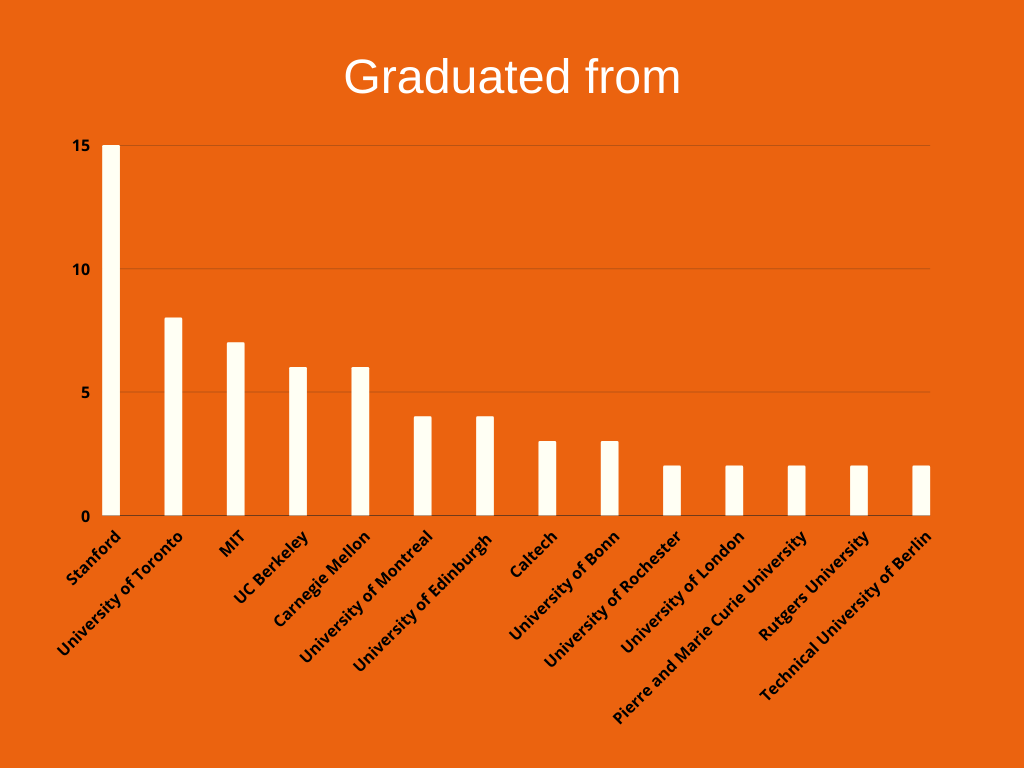
As you can see the top three schools that top machine learning and AI experts have done their graduate studies (mainly their Ph.D.) are:
1. Stanford: 14.6%
2. The University of Toronto: 7.8%
3. MIT: 6.8%
Where do these experts work?
It is also interesting to know where these top experts in machine learning and AI have done their graduate studies. Here is the result of our analysis: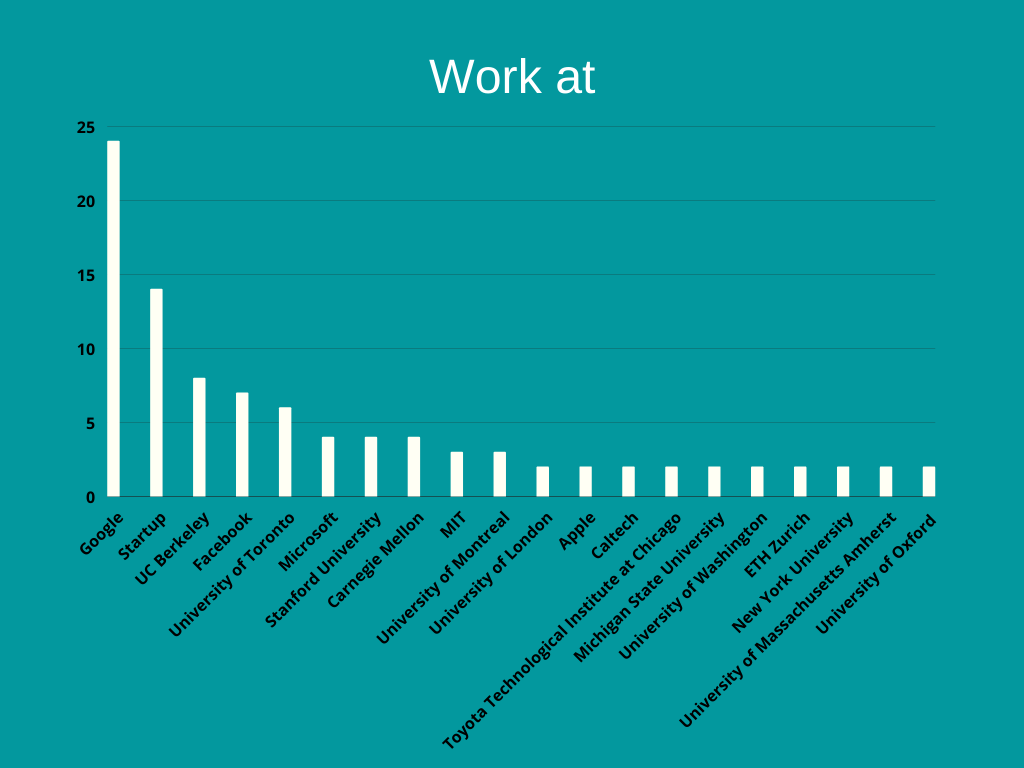
As you can see the top three places that employee top machine learning and AI experts are:
1. Google: 23.3%
2. Startups: 13.6%
3. UC Berkeley: 7.8%
Where do these experts live?
Finally, it is also interesting to know where these top experts in machine learning and AI live. Here is the result of our analysis: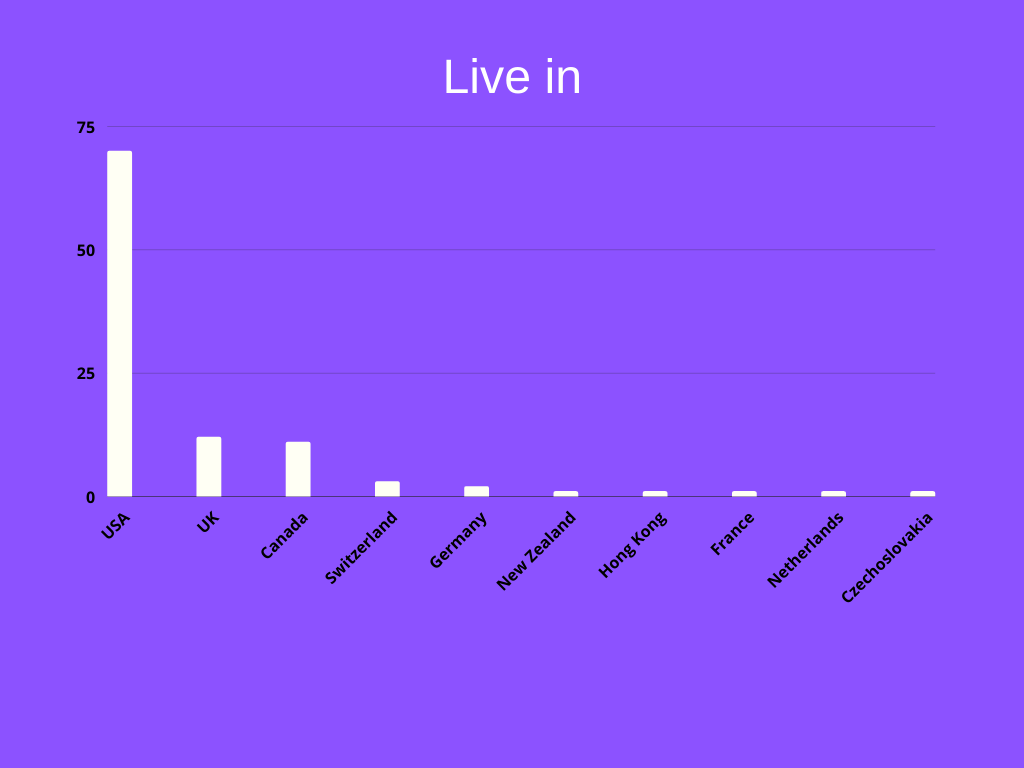
As you can see the top three countries in terms of the number of top machine learning and AI experts are:
1. USA: 68.0%
2. UK: 11.7%
3. Canada: 10.7%

